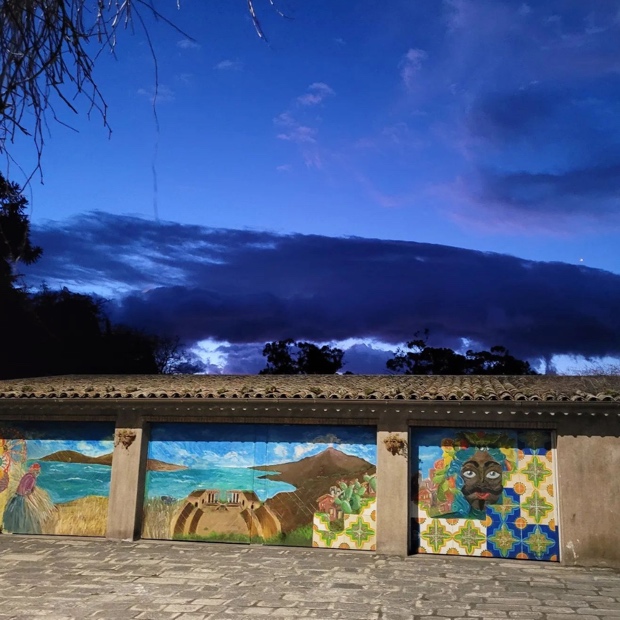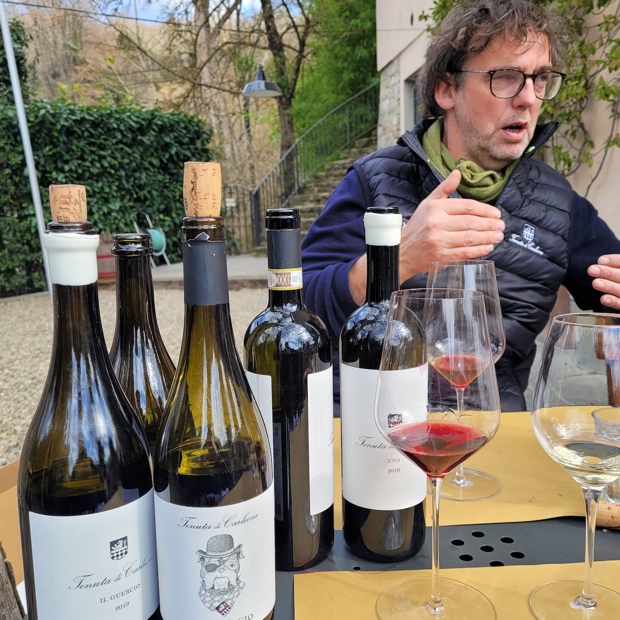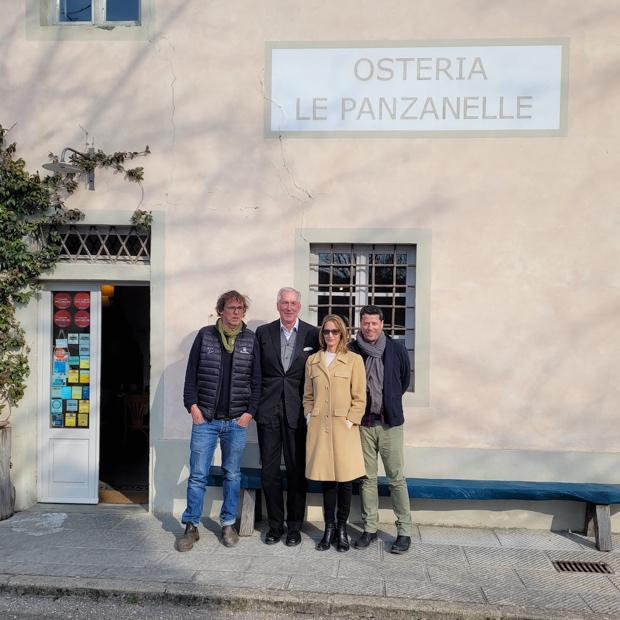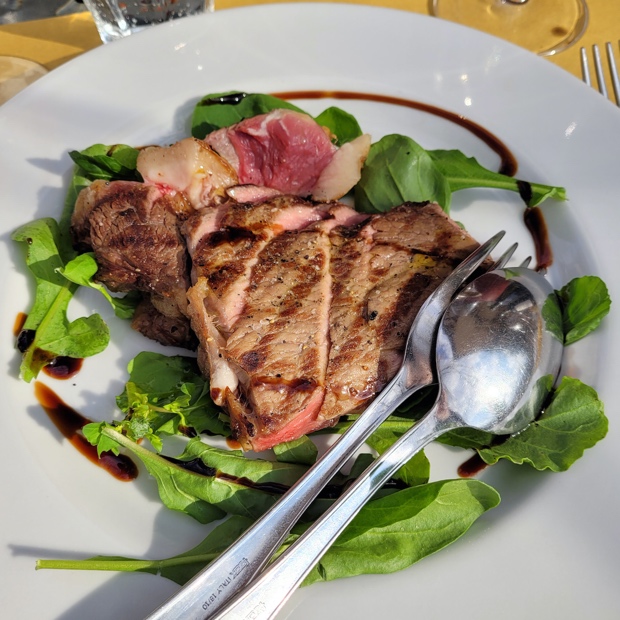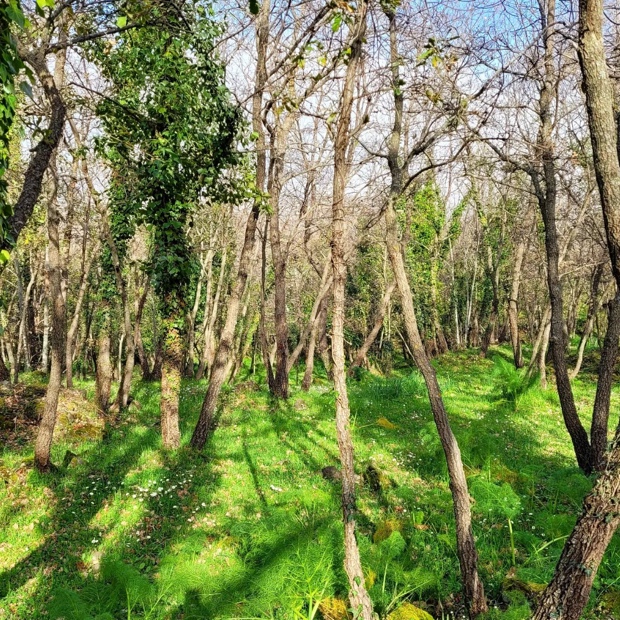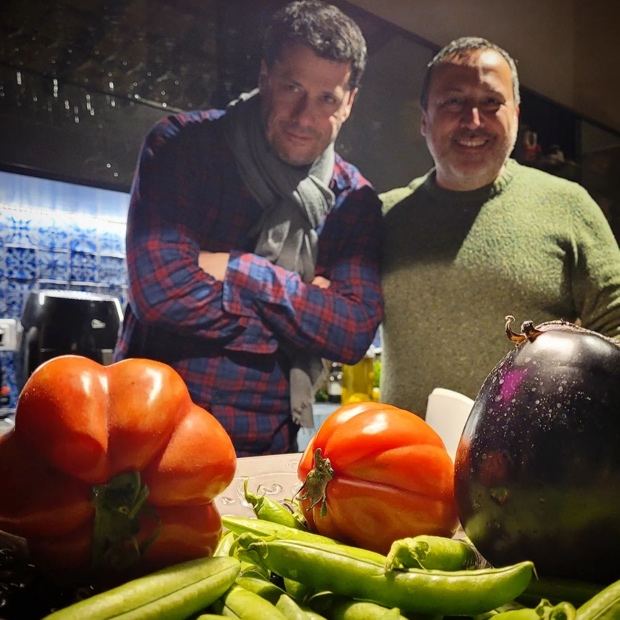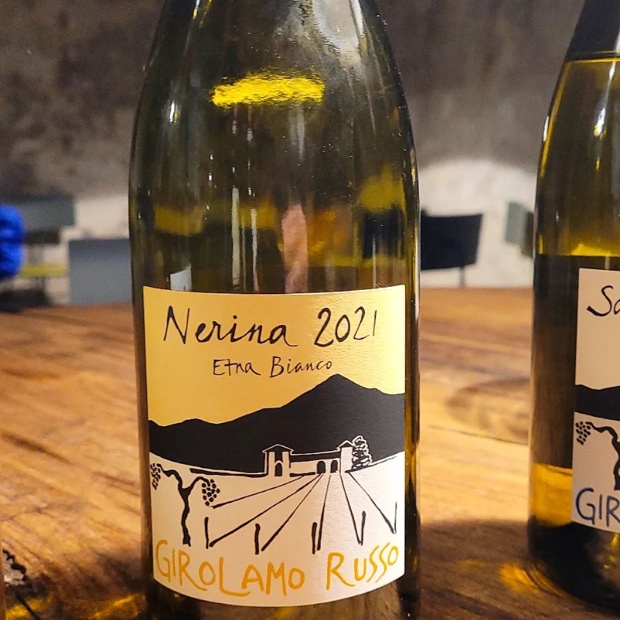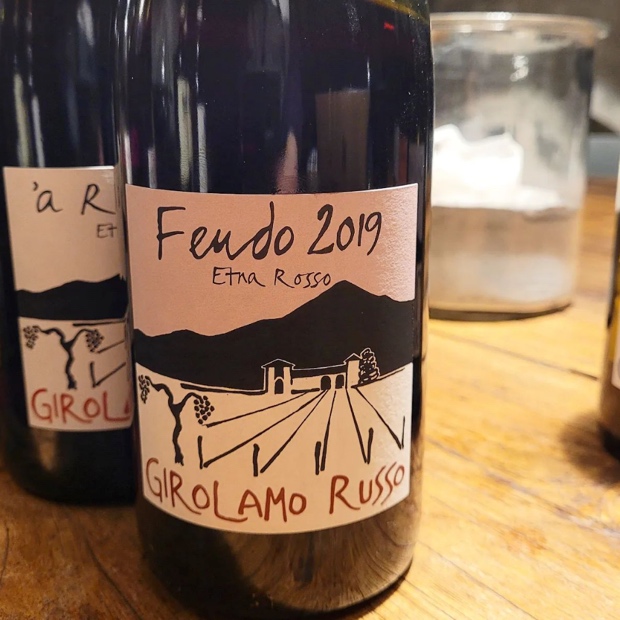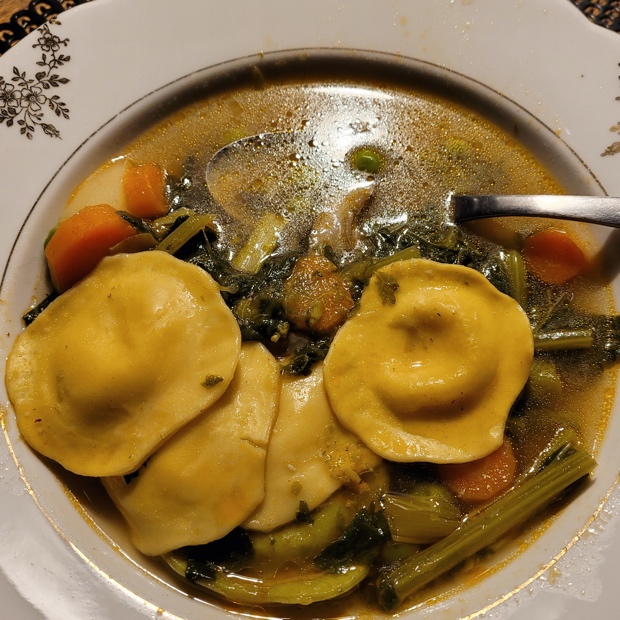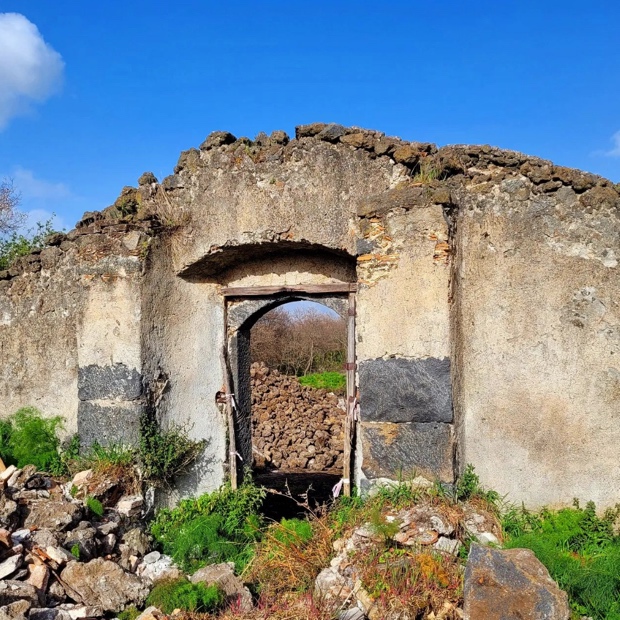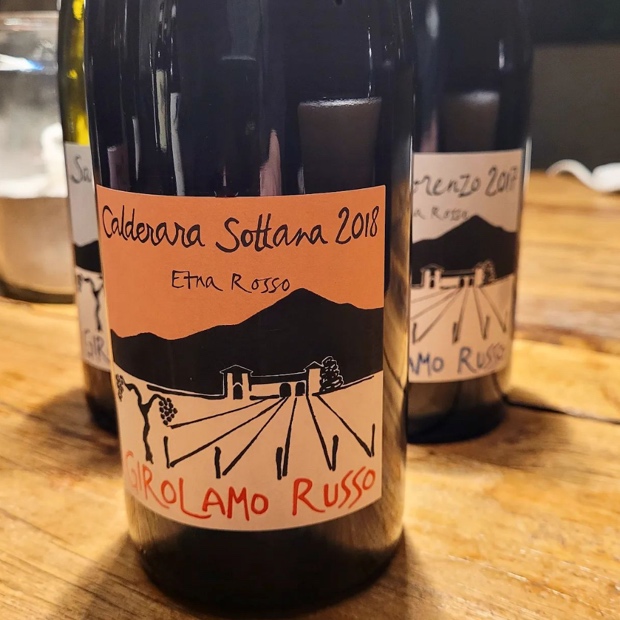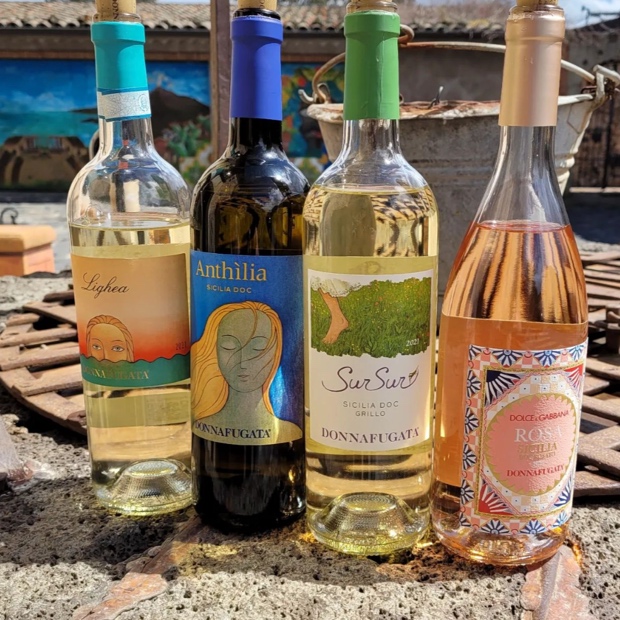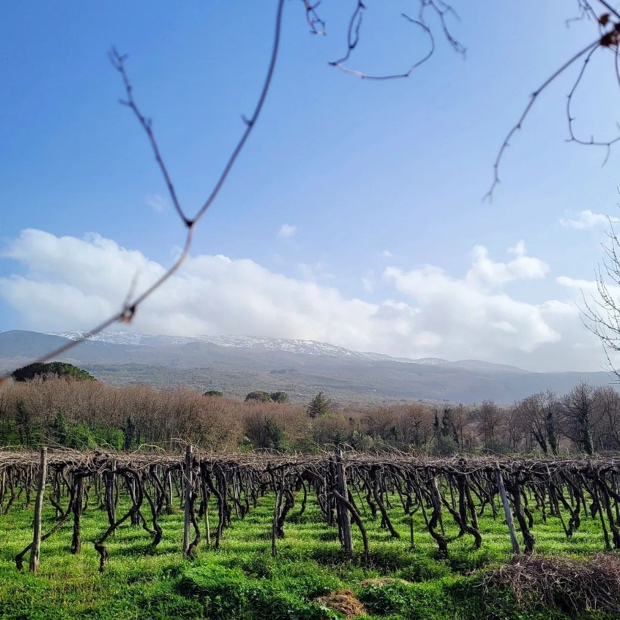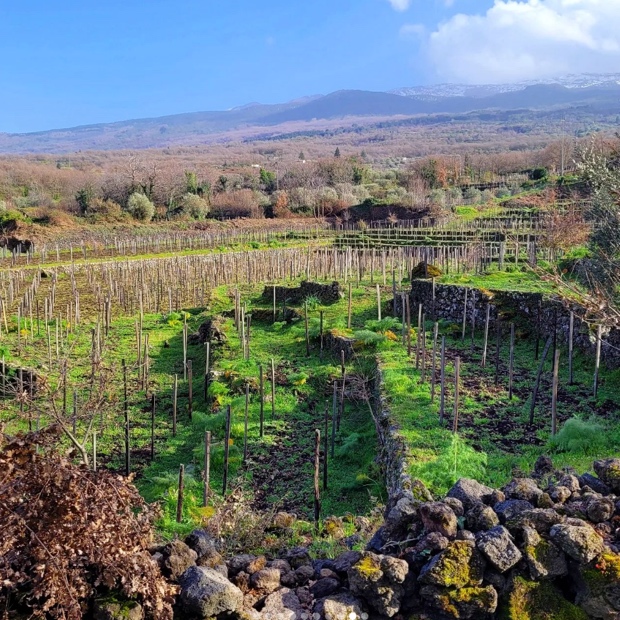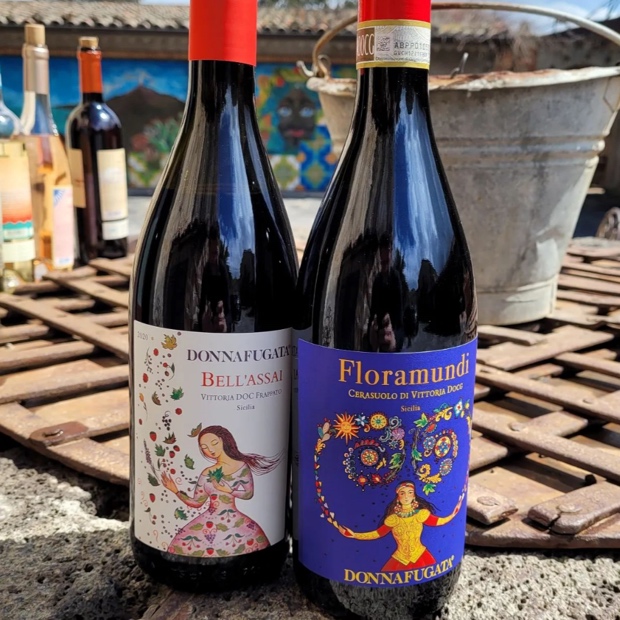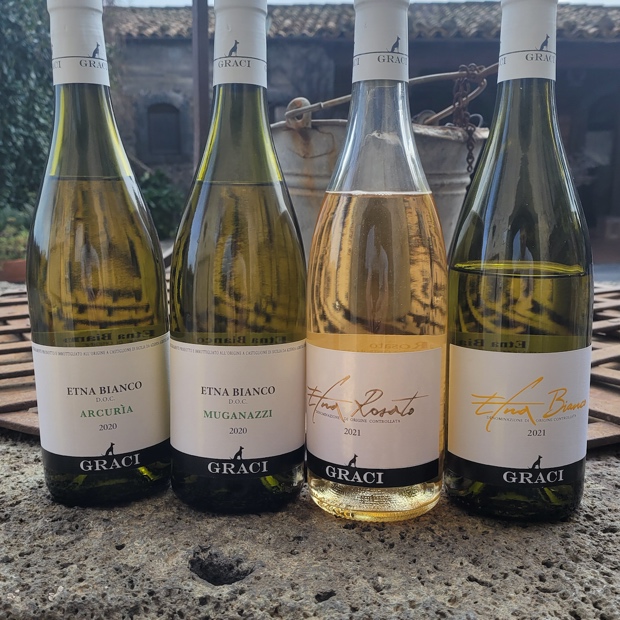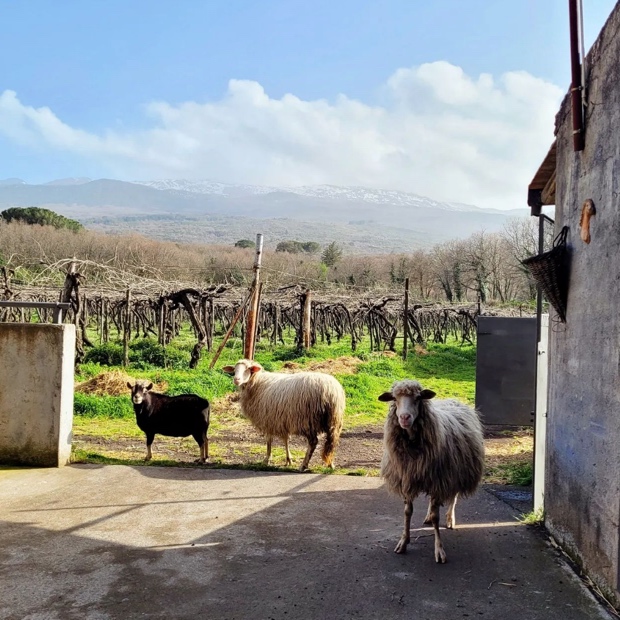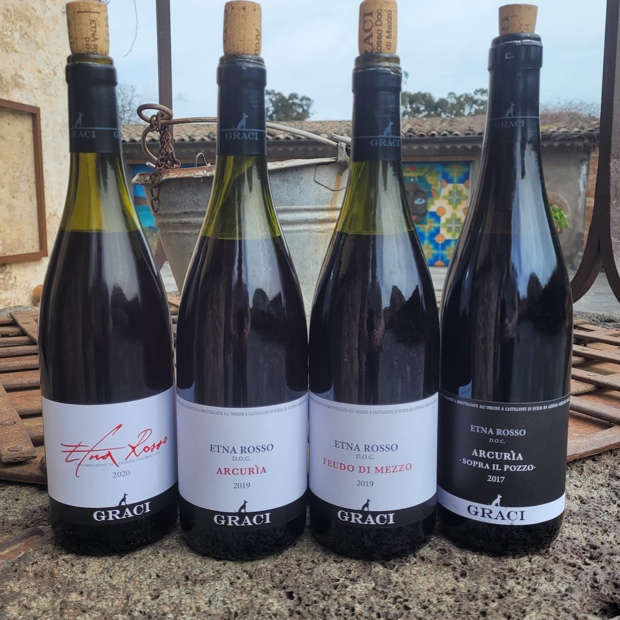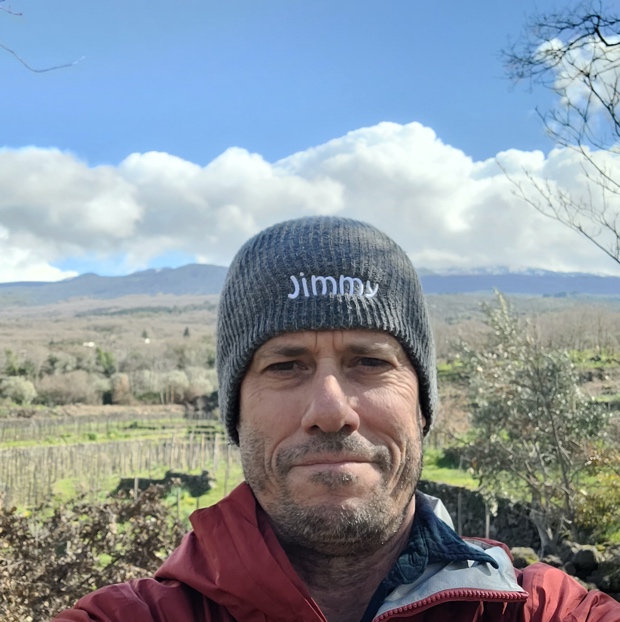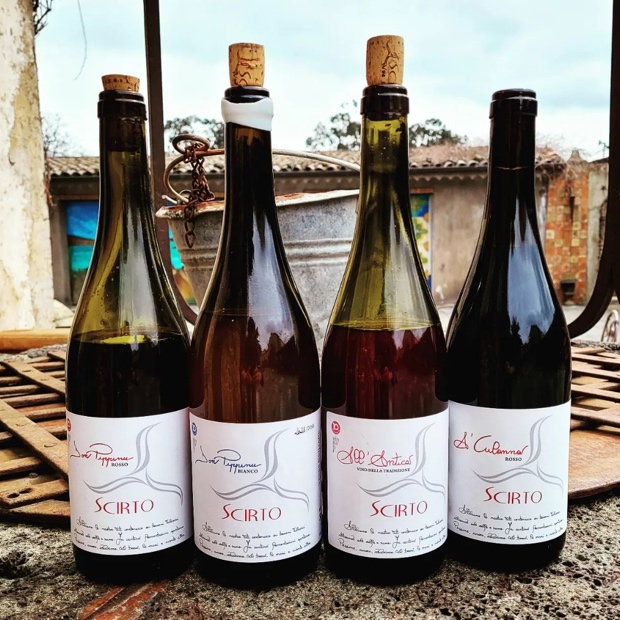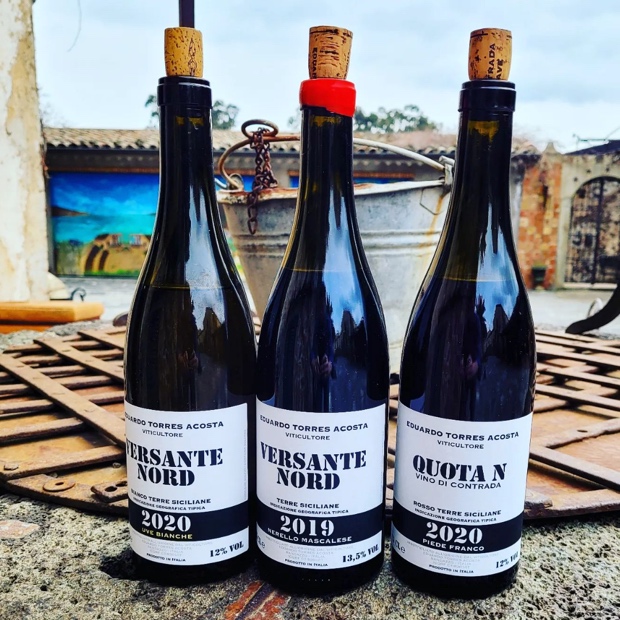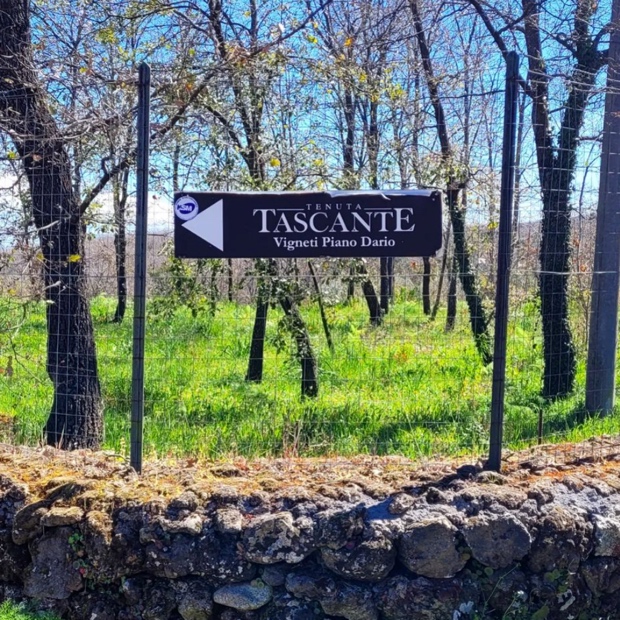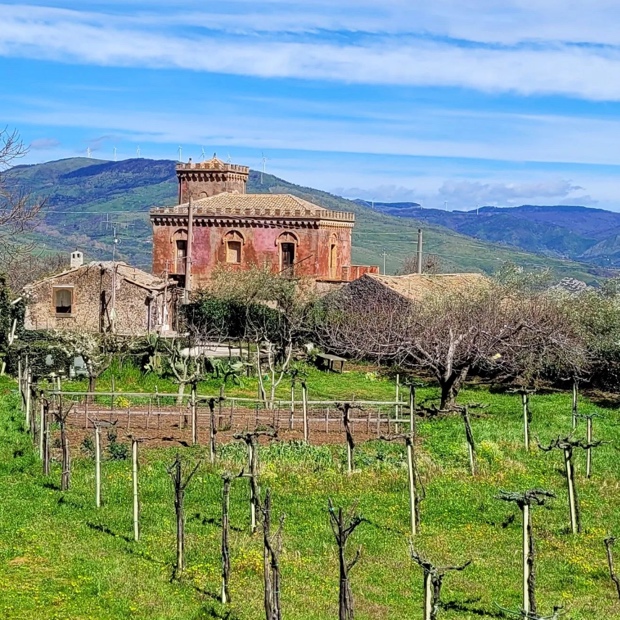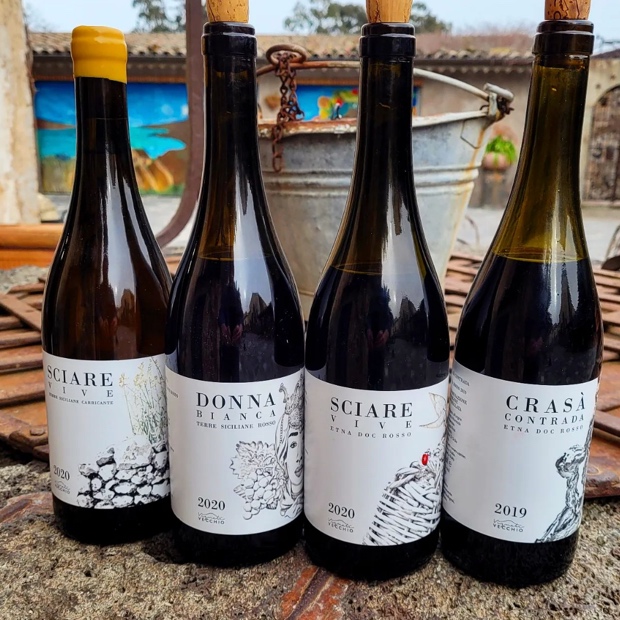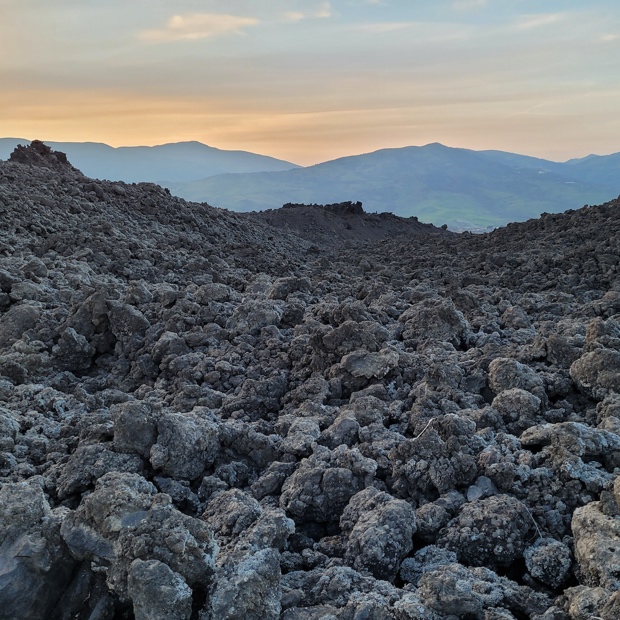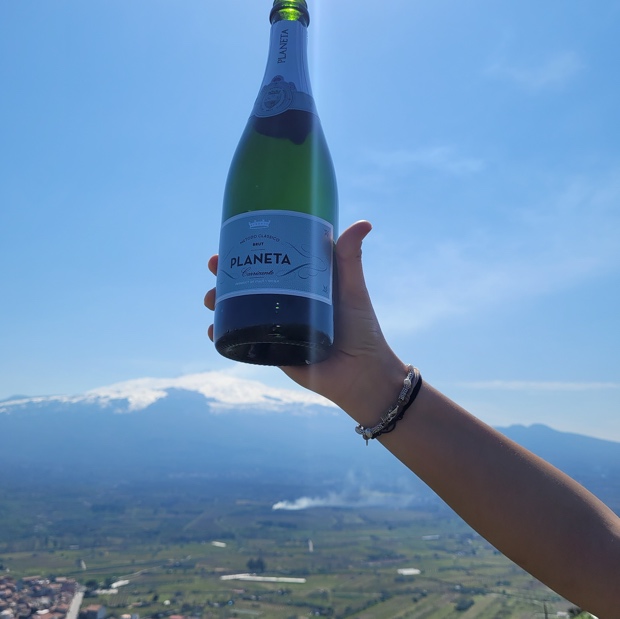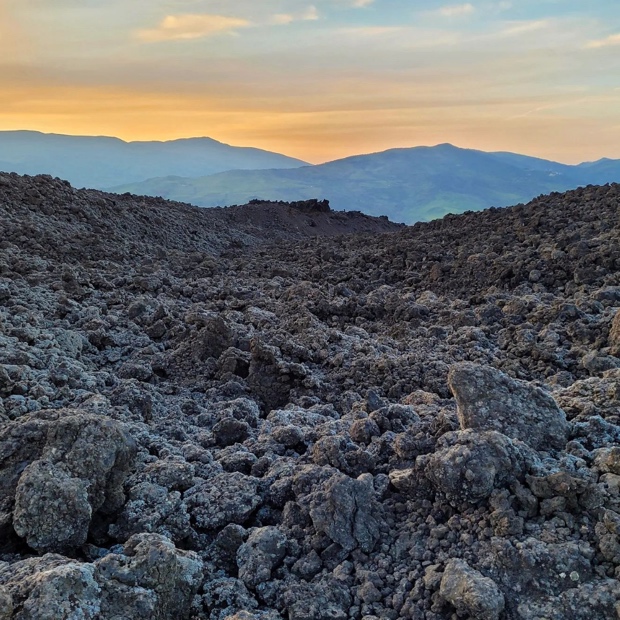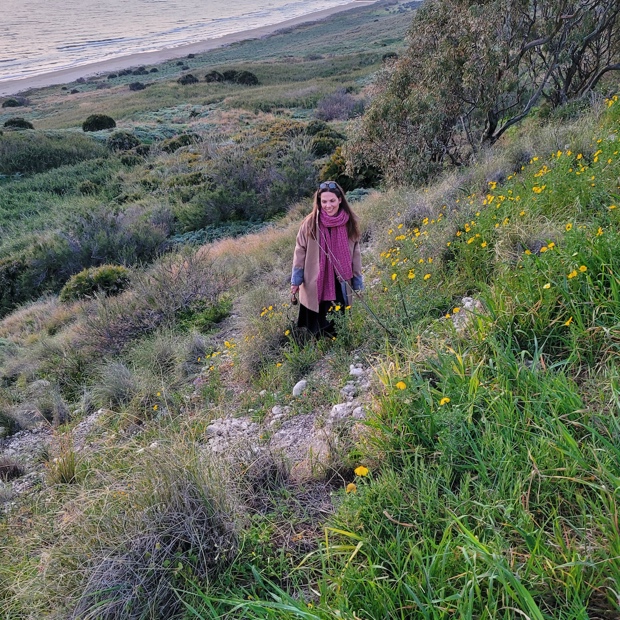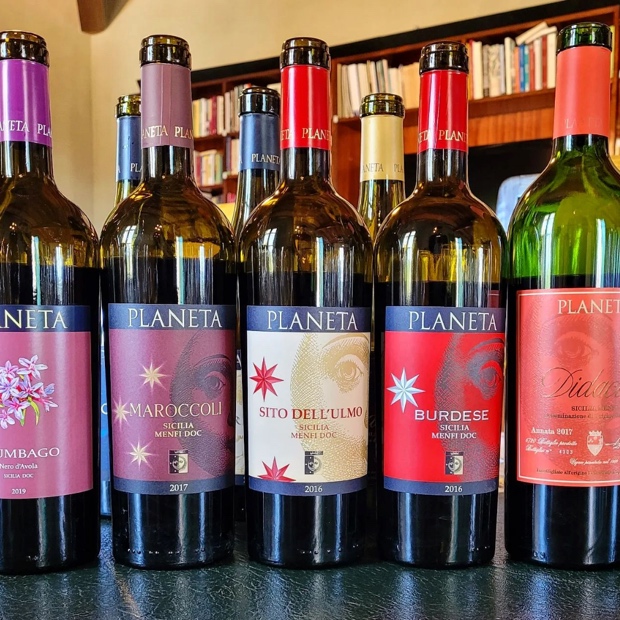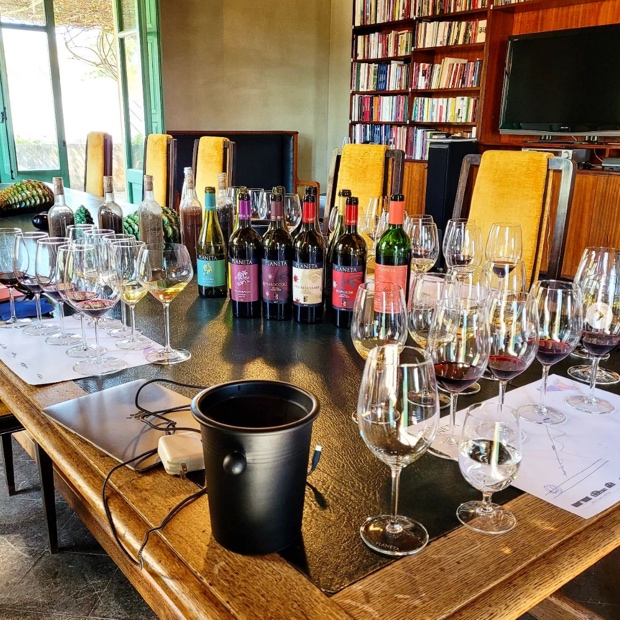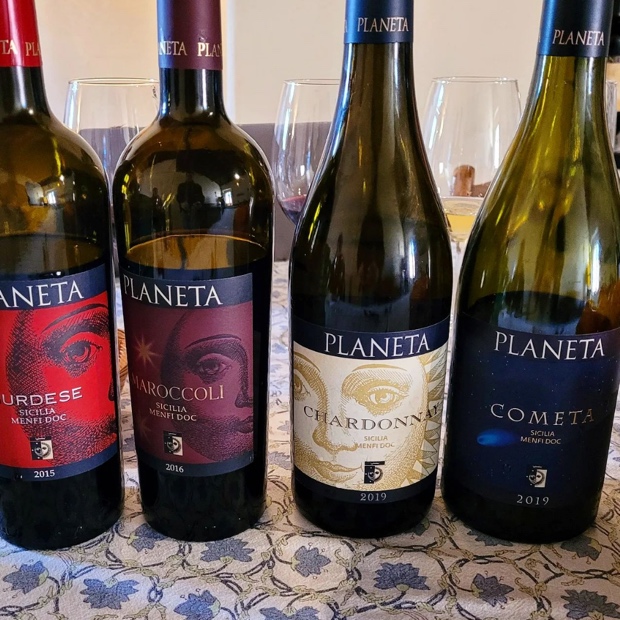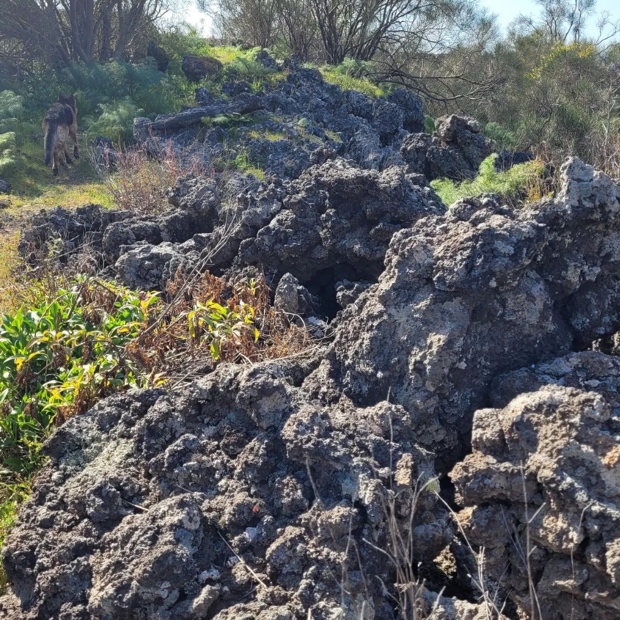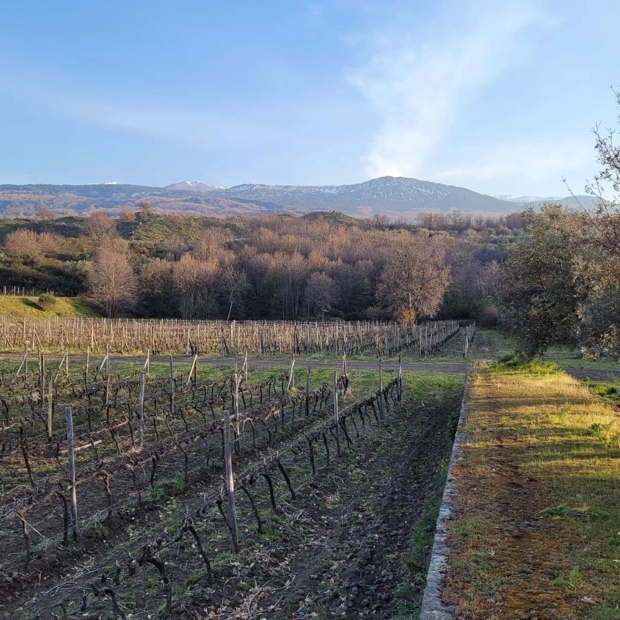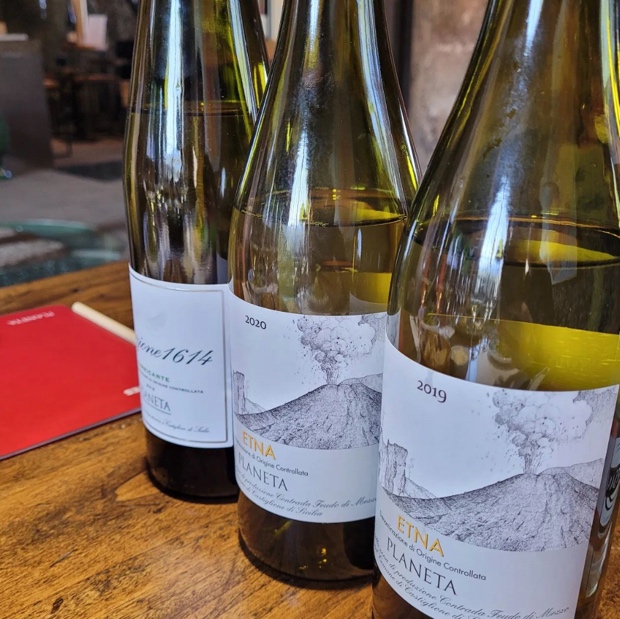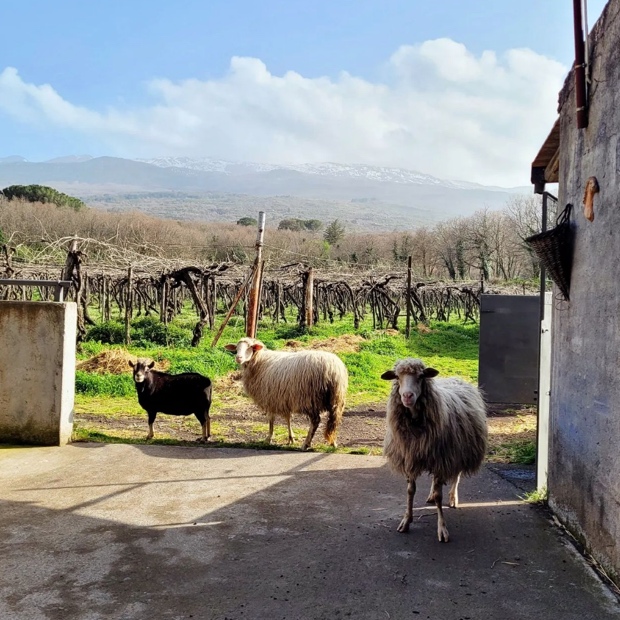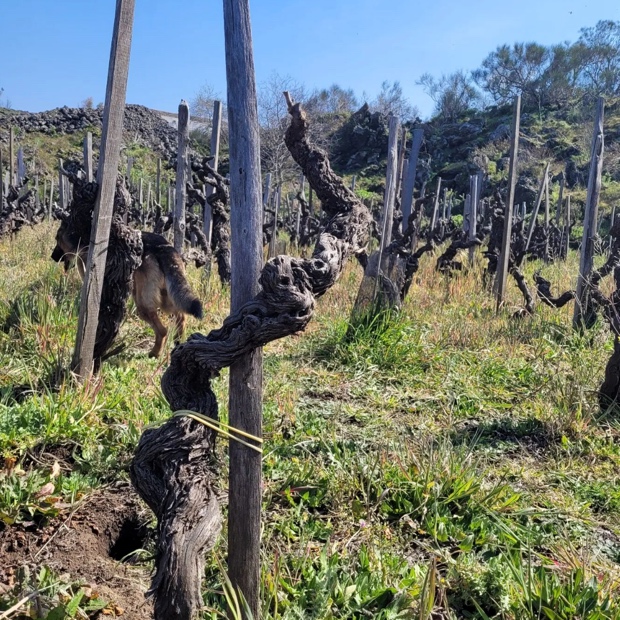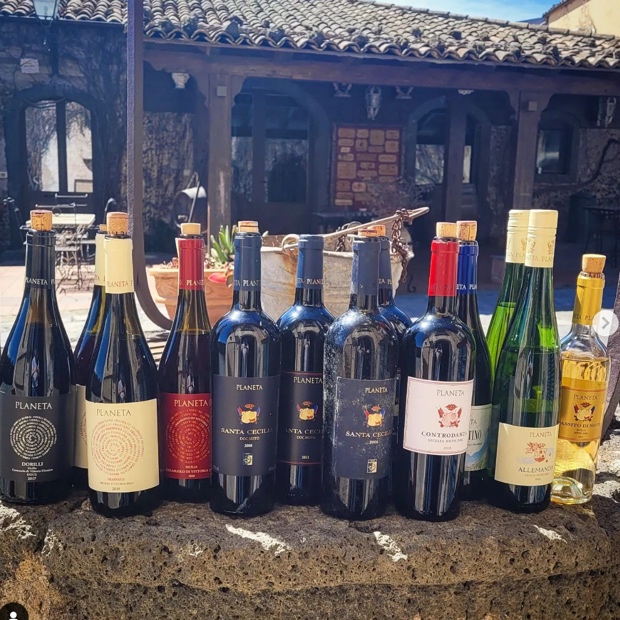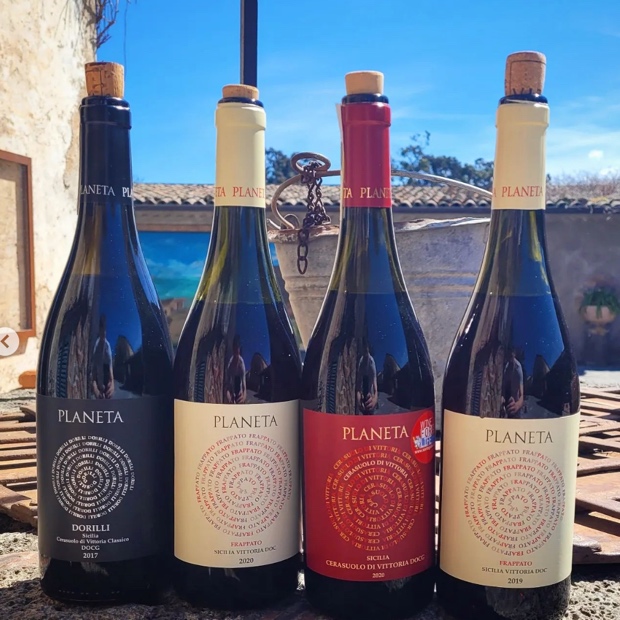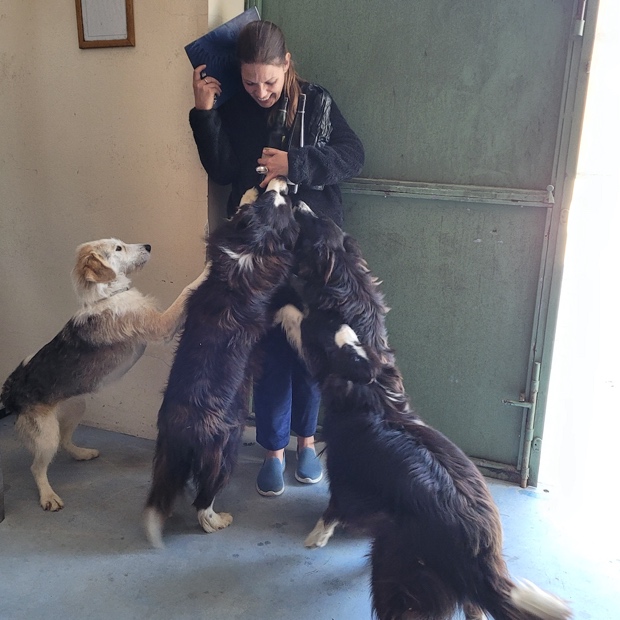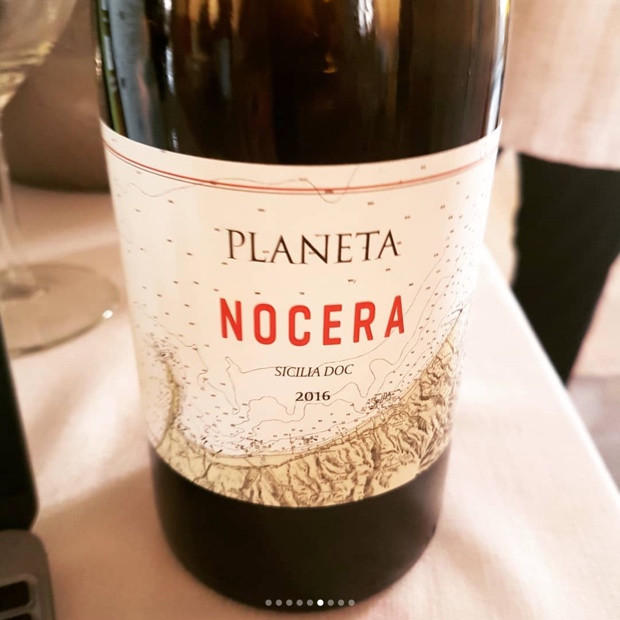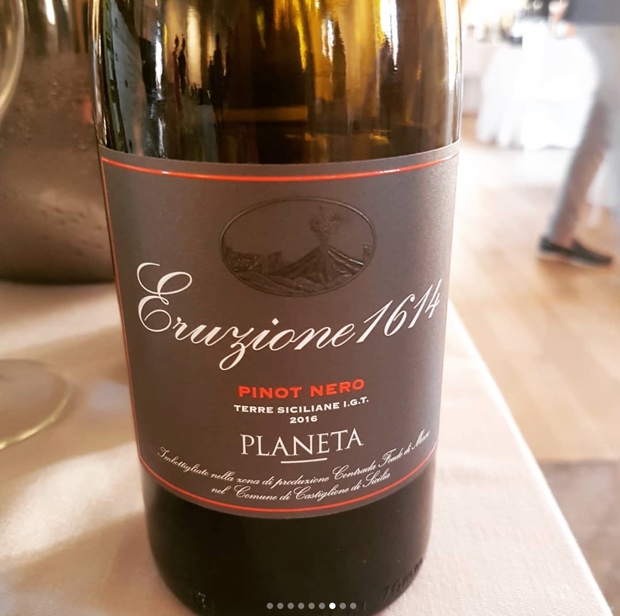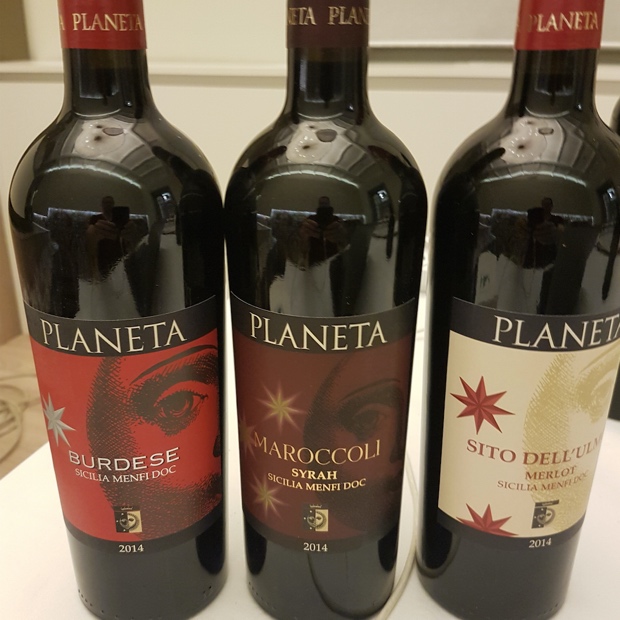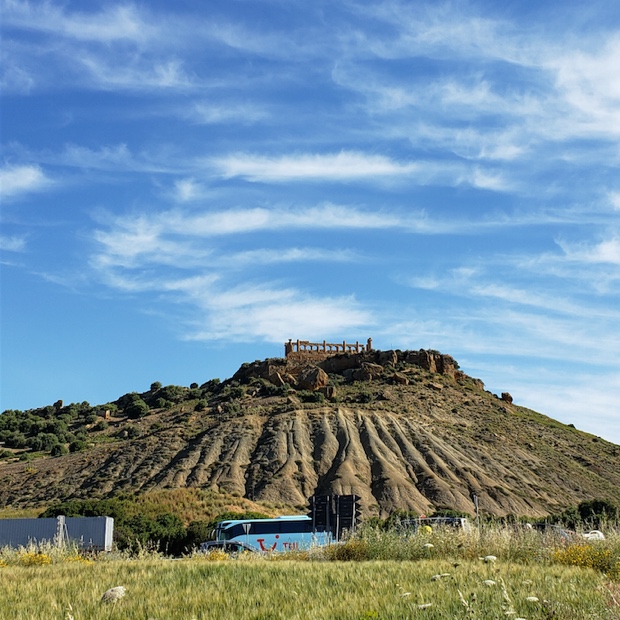
Temple ruins of Giunone, Parco Valle dei Templi Agrigento
People get ready and listen up. Back in May of 2019 I paid a visit to the great and ancient, melting and wondrous pot of multiculturalism that is the island of Sicily. Sicilia en Primeur, a.k.a Anteprima Siciliana is one of Italy’s finest. JustSicily founder Giusi Macchiarella and her staff on a mission to be great provided my companions and I with an Enotour designed to make tracks through green pastures and winding roads mostly covering the eastern and southeastern sectors of the island. Though it flew by in an instant there was plenty of time afforded intensive investigations over backroads of Catania and Agrigento, replete with return engagements at four near and dear properties; Feudo Montoni, Tenuta Regaleali, Baglio di Cristo Campobello and Feudo Principe di Butera.
Related – Notes from 2019 Sicilia en Primeur
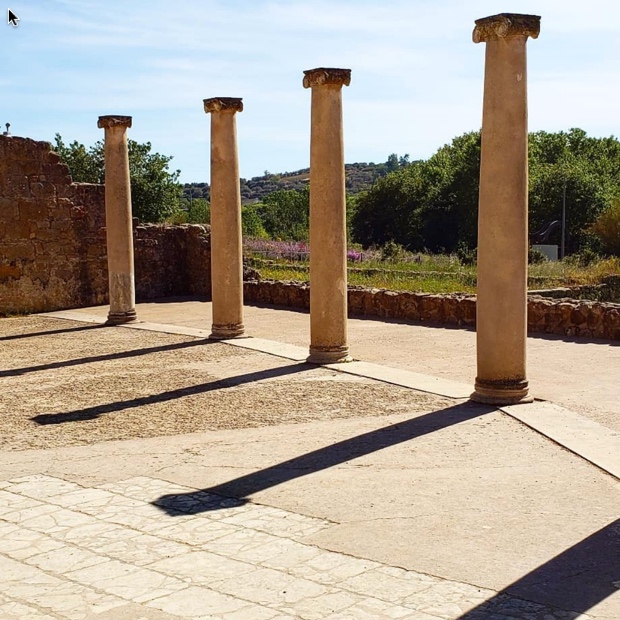
A walk through #villaromanadelcasale to see the exorbitant 4th century splendour of Roman nobility
These visits reconnected me with some of Sicily’s smartest and greatest characters; Fabio Sireci, Melissa Muller, Alberto Tasca, Davide Bacchiega, Carmelo Bonetta, Rosario Ferro, Antonio Paolo Froio and Alessandra Zambonin. It also made cause to pause and be reminded of the important vineyards and wines for which these messengers are custodians; Vrucara, Barbietro, San Lucio, Campobello di Licata and Deliella. On this 2019 leg of the journey a new vineyard discovery called Diodonos told an old nero d’avola story for the Agrigento cooperative Canicattì beneath the temple ruins of Giunone. Perfect segue for a walk through Villa Romana del Casale to see the exorbitant 4th century splendour of Roman nobility.

A glorious finale in Ortigia at Castello Maniace with @siciliaenprimeur
After the 2018 Sicilia en Primeur I asked “have you ever felt so at home or been so comfortable travelling as you have been in Sicily? If you’ve not been then you might not understand what I mean. Sicily is Casa quantu stai e tirrinu quantu viri, “home for as long as you need to be and land as far as the eye can see.” I always assumed it would be the water to captivate me, but from endless seas of wheat to grapevines covering plains, hills and terraces, it would always be about the land.”
“You might also think this island in the southern Mediterranean would ripen grapes with the sort of ease akin to some of the world’s warmest climates, like South Australia or the Western Cape of South Africa. Oh that it were so simple. In Sicily they say, Austu e riustu capu i mmennu, “after August, winter starts.” Growing grapes is truly a matter of place. You need to be specific with your grape varieties and match them to your micro-climate, but also your soils. This is a Sicilian necessity.”

Calling it a day with the @siciliaenprimeur sommeliers @orteapalace
In Siracusa we tasted all the wines of Sicily over two glorious Ortigia days in the palace. I have split up my 136 tasting notes into 12 separate categories, five of which cover the winery visits. If you’d like to go straight to a particular section covered in this report, please feel free to skip forward and click the quick links for any of the following categories:
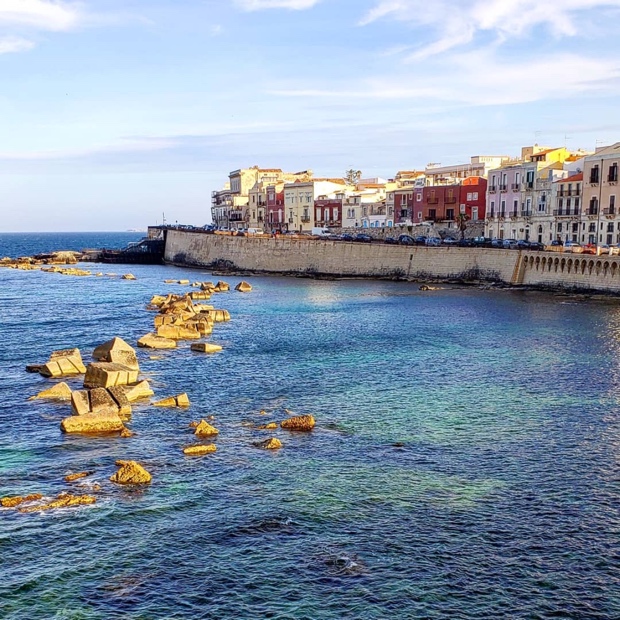
It’s on the way back home We’ll be there soon.
Sicily’s Viticultural Year: 2018
For those who keep such records, 2018 will go down as the fifth hottest year on the Mediterranean Italian island since 1900. Sicilia en Primeur took place between May 6th and 10th, 2019 as Assovini Sicilia presented that peculiar vintage to 100 international wine journalists through three days of eno-wine tours and two more of anteprime in Siracusa. This sixteenth edition of Sicily en Primeur hosted 50 producers in the Ortea Palace Luxury Hotel of Ortigia, with more than 500 wines available to taste. The technical presentation was delivered by Mattia Filippi, winemaker and founder of Uva Sapiens. Five masterclasses were presented by five Masters of Wine; Vineyards with a sea view, Travelling through time, DOC Sicilia, Etna, a constantly evolving territory and Small Destinations, a great history.
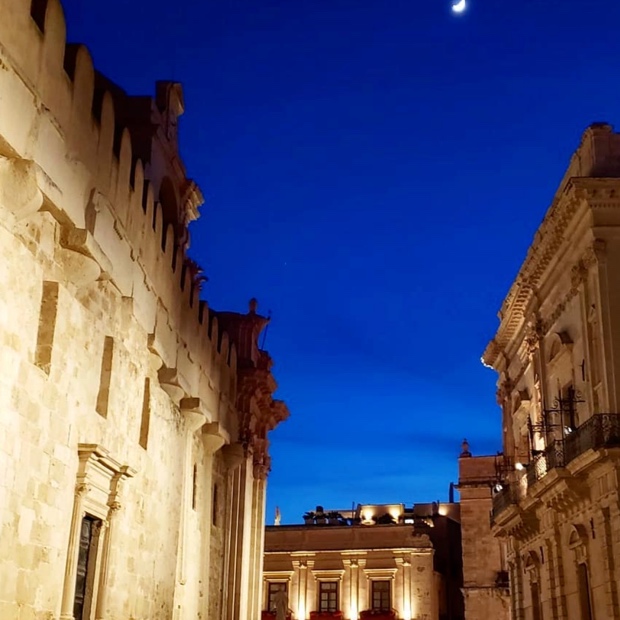
#piazzadelduomo #ortigia #syracusa #sicilia
We learned three simple truths about the Sicilian wine industry because of the collective reaction to the heat brought forth by 2018. First, production numbers were consistent with 2017. Second, the other two wine production regions of Italy with similar horizontal exactitudes were Piedmont and Tuscany. Third, Sicily proved that staying true to core values, paying attention to quality and limiting yields in the name of productive balance puts the island’s denominations in a league with the country’s elite.
Related – Sicily in review
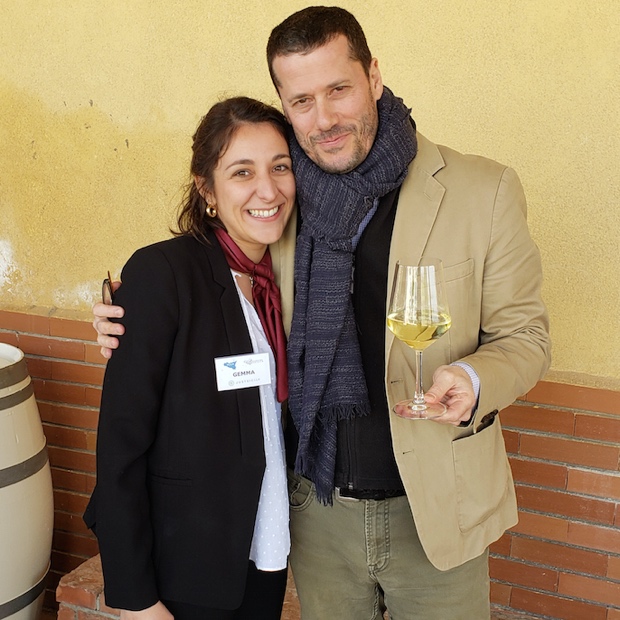
Sicily’s aromatic whites
In Sicily, the climate and especially the many micro-climates bless the island with levels of aromatic complexity that come straight off of the skins of the grapes, especially the whites. The winemaker attuned to and in tune with his or her terroir is not in search of fat wines because quite frankly, in Sicily they already have so much of everything. So the question begs, “why do they need more?” This fundamental approach is surely an existential one but also one that is highly practical and when followed always leads to some of the most truthful aromatic white wines on the planet. From catarratto, grillo and inzolia to carricante and zibbibo, Sicilian whites are simply killing it. Two prime examples are noted from May visits with Fabio Sireci at Feudo Montoni and Alberto Tasca at Tenuta Regaleali. Many others offered up thrilling discoveries, including those made by Planeta, Tornatore, Donnafugata and Rallo.

Fabio Sireci and Melissa Muller
Feudi Montoni

Feudi Montoni Catarratto Masso 2018, Sicilia DOC ($22.95)
Masso is the cru, “conglomerate stone,” from the soil. Fermented in cement, locked in for and with freshness, sapid and ultra fresh. In 2018 it rained every 10 days, including during harvest so the aromatics are an about face from 2017, a vintage that saw no rain from March to October. What was a relative tropical 2017 is now an herbal, verdant 2018, with aromatics filled by wild finnocchio, fava, honeysuckle, chick pea and lentil. So to speak. Great freshness and so linear, with more age potential. More lime in ’18 and sapidity but only having tasted ’17 will you heed to that belief. Drink 2019-2022. Tasted May 2019.
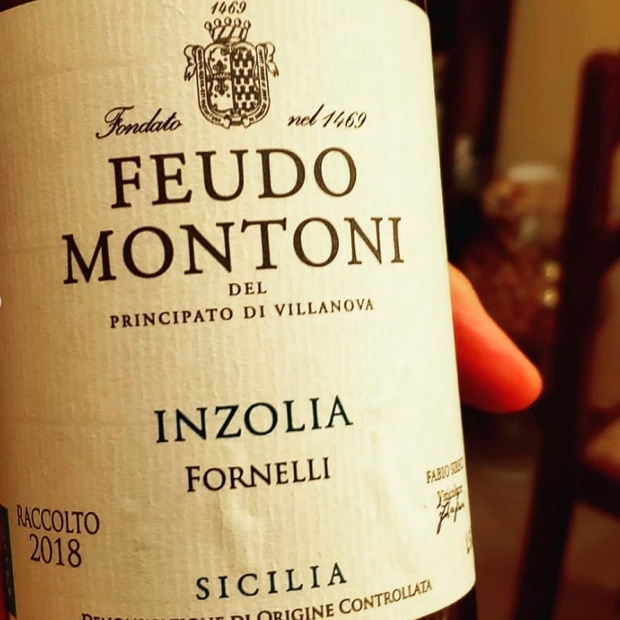
Feudo Montoni Inzolia Dei Fornelli 2018, Sicilia DOC (539932, $22.95)
‘Tis a perfumed vintage for inzolia in Montoni’s world and while the length of time for its stay in stainless is not defined, it remains at service, ready when ready and different every year. If it’s floral so be it with thanks to the blooming heather or in this property’s case, the purple honeysuckle. Another indigenous wine extended from the pied de coup, wildly elegant and yet so simple. Will gain some honey and more flinty strike with a few years in bottle. “And we’ll all go together.” Drink 2019-2023. Tasted May 2019
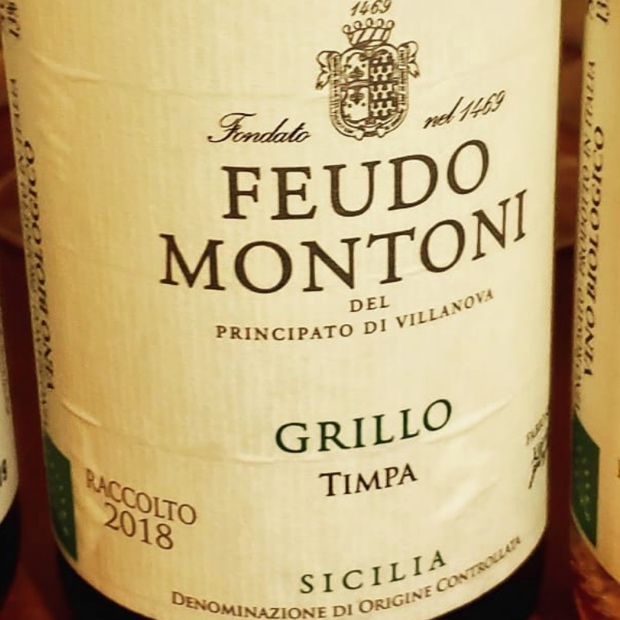
Feudo Montoni Grillo Timpa 2018, Sicilia DOC ($22.95)
Like the cattaratto and the inzolia the aromatics have turned 180 degrees in ’18 from the wet year, with linearity and direct to the senses notes. Still the fresh squeeze of lemon gets you quick, with smiling spirit. A wholly soulful grillo that will keep you woke and alive. Drink 2019-2022. Tasted May 2019

Feudo Montoni Nerello Mascalese Rosé Di Adele 2018, Sicilia DOC ($22.95)
“For you Adele I will pull out all the thorns and put in roses.” This from Fabio Sereci’s father to his mother. Also symbolic for bringing a vineyard back to life. The only wine not named after a cru, but after mama, the mama, the only mama. The “roses of Adele.” The most sapid, herbal, linear and did I mention sapid Rosé in the these parts and any nearby and far away. Take nerello mascalese, grow it in the wilds of Feudo Montoni and this is the result, elegant, lengthy and certainly piu sale. Drink 2019-2021. Tasted May 2019

Feudo Montoni Nero d’Avola Lagnusa 2018, Sicilia DOC (523738, $23.95)
The cru where the nero d’avola grows, the lazy one or better yet the smart one, intelligent one who is a late starter, but when he works he’s very good at what he does. Lagnusa. Also a grape gown in clay soils from which yields are low, once a negative now very positive in terms of quality. Some concrete aging and only a short contact with mostly (approximately 80 per cent) old barrels. Another factor of a vintage, herbal, dusty, so very fennel and aromatic enhancing legumes, non marmalata, far from dense, heavy or over the edge in any possible sense of reality. Just balanced in its slightly wild, feral, cured and elegant way. Drink 2019-2023. Tasted May 2019
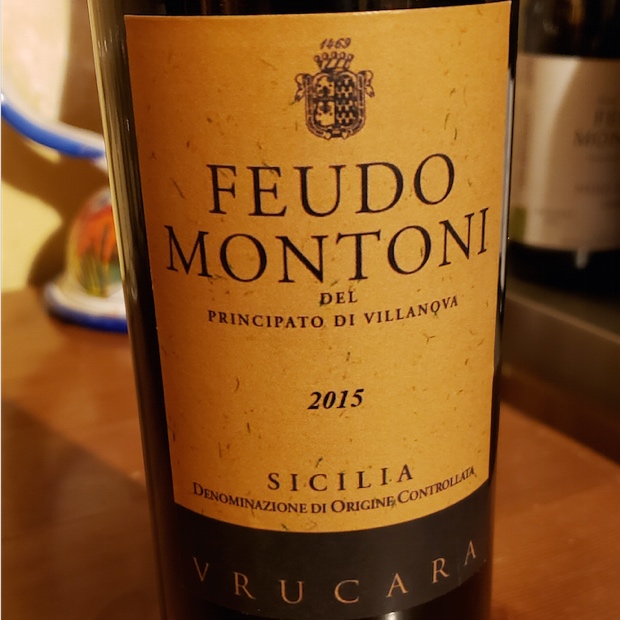
Feudo Montoni Nero d’Avola Vrucara 2015, Sicilia DOC ($58.00)
The en primeur nero d’avola, finished but so far from even hinting at a readiness. Wild strawberry and the dreams of aromatics to come; carob, liquorice, salumi and all the herbs. Grasses and magical things that grow in a Montoni natural world. Top quality acidity for 2015, reeling, supportive and wild. A truly structured wine and one that will resist growing old despite the passage of time. Drink 2020-2029. Tasted May 2019
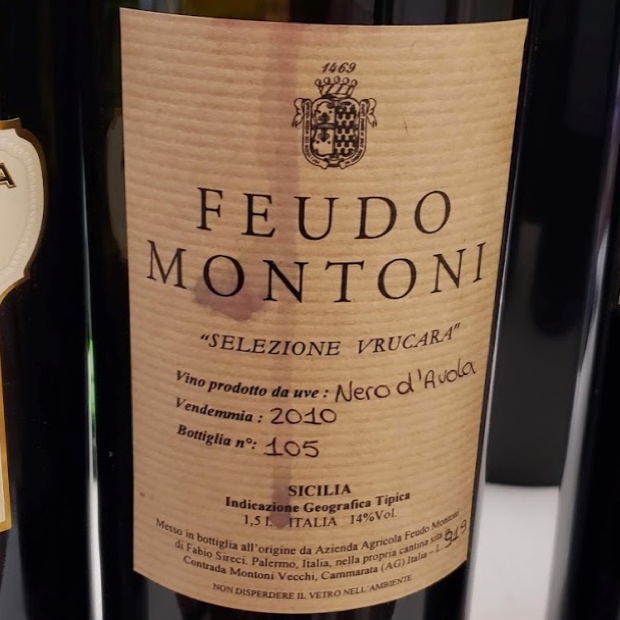
Feudo Montoni Nero d’Avola Vrucara 2010, IGT Sicilia
From Fabio Sireci’s pre-phylloxera vineyard in which some heritage nero d’avola with unparalleled root structures find water six to eight metres below the sand and clay layers. Some are as old as 120 years and still others have been raised by the Sireci method of propaginato, the bending of a heritage vine cane into the earth and then brought up as a new vine. The savoury here is fed by so many surrounding native plants, aromatic oils and how they share the terroir with the Vrucara vines. It’s a great wine, singular, mature and mellowing but done with such confidence and lessons learned. One of Sicily’s greatest wines of confidence and humility. Drink 2019-2025. Tasted May 2019

Feudo Montoni Nero d’Avola Vrucara 2008, IGT Sicilia
Still just a baby, curative youthful, high acidity very much in charge with an uncanny at present aroma of wild strawberry. Impactful wild fennel and roses still in bloom. Just the first stages of secondary character are upon the aromatics but structure controls the rest, all of whom still lay in wait around the next decade. We visited the queen by pickup at night where she sits on her throne, as she has for 120 years, with her children born by propaginato, over the course of all that time. Like a cavallo indonato or, if you like, non manzito. Untrained, not wanting to be fenced in, needing time to civilize, habituate and domesticate. We’ll all be long gone. Last tasted May 2019
The answers are so simple and yet unanswered because magic is involved. You can understand the old vines and the way their fruit turns into wines that begin with ancient wisdom but move so little in the first seven years. What happens at 10 is the turning outward, to express the place and speak the dialect of the cru. The acidity is still high but is now in lift, with fruit at the height and en anergy that flows, really flows, moving across your palate with grace, grab and attention. A contiguous wine from start to finish, with intensity, impression and precision. The structure is come cavallo domato, like a trained horse. Dramatic nd’A but with no drama at all. Tamed and in respect of ancient vine, where it grows and what it wants to give. Ma zitto, a wine to keep you silent. Drink 2018-2029. Tasted May 2018
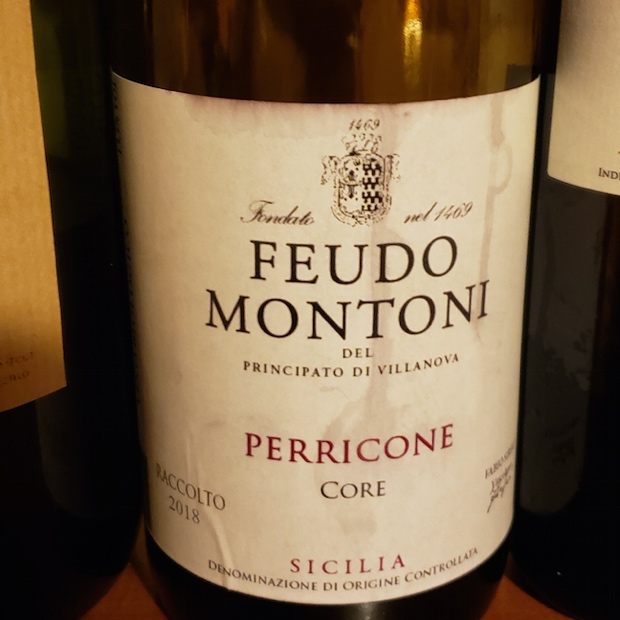
Feudo Montoni Perricone Core 2008, Sicilia DOC ($22.95)
The most interesting of grapes, known as guernaccia in this part of Sicily, “the grape of the farmer,” thick-skinned, disease resistant and perfect for making home made wine. Full phenolic perricone still has a green pit, picked late (in November), so Fabio cuts/crimps the vine very hard, blocking the flow of sap from the rootstock to the clusters, ostensibly creating an appassimento technique but in the vineyard, one week before harvest. Intriguing from bitter cocoa, through tobacco, carob, bokser and liquorice. You absolutely need lignification, brown stems, for whole bunch fermentation and add all this up, the grape, the techniques and the result is almost singular for any red wine in the world. Drink 2019-2025. Tasted May 2019
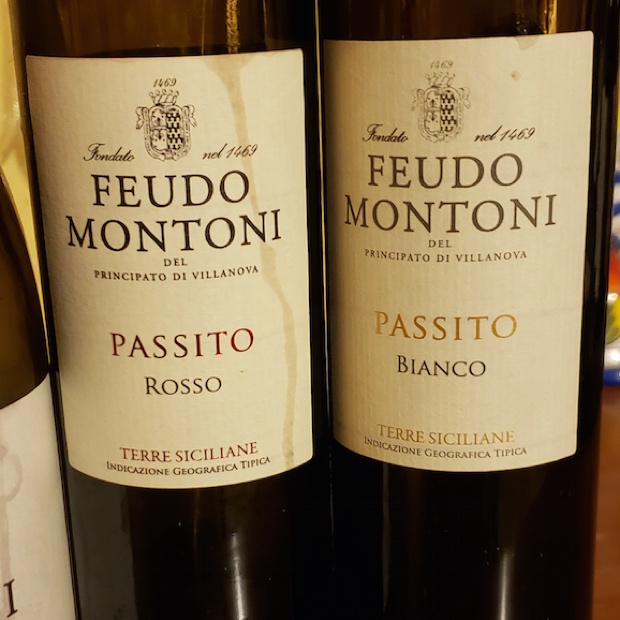
Feudo Montoni Passito Rosso, IGT Terre Siciliane
From nero d’avola and perricone. Upwards of 200 g/L of RS. That nero liquorice and carob is magnified, hyperbolized and liquified. The acidity brings stability and re-introduces the varietal centrifuge and microcosmic sense of place to the wine. This is like the place itself, centre of some people’s necessary universe, where everything goes on and on. Drink 2019-2029. Tasted May 2019
Feudo Montoni Passito Bianco, IGT Terre Siciliane
From grillo with some cattaratto to elevate and manage acidity in a passito that is upwards of 136 g/L of RS. So much fruit goings on; gelid orange, caramelized orange, burnt pineapple and apricot. Just faintly nutty, surely unctuous and fine. Drink 2019-2029. Tasted May 2019
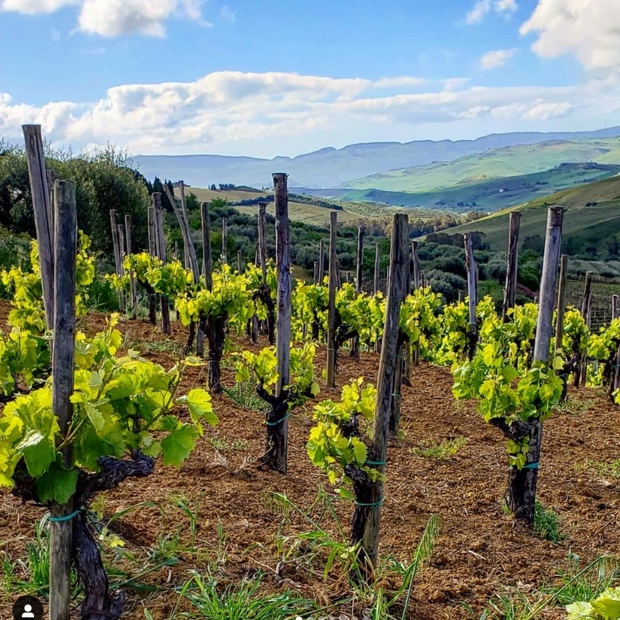
So good to be back @tenutaregaleali with @albertotasca
Tenuta Regaleali
Tenuta Regaleali Nozze d’Oro 2017, Sicilia DOC
A wine with a nod in ode to Alberto Tasca’s grandparents and their 30th anniversary, made from inzoilia off of the old (back to 1966) Barbieto Vineyard and blended with sauvignon blanc grown at the highest site on the estate. From a hot and quick vintage the two aromatic varieties layer to create something intense and the connection to Bordeaux Blanc in style is somewhat an uncanny one. A seamless and straightforward white wine with top quality sweet acidity and exceptional food pairing ability. Drink 2019-2024. Tasted May 2019

Tenuta Regaleali Nozze d’Oro 2014, Sicilia DOC
A cooler vintage makes for a flintier, tighter and more snappy white blend, from Barbietro Vineyard grown inzolia and sauvignon blanc. If the hot 2017 was thought to be a Bordeaux ringer than this will double down on that idea, in fact this makes that vintage seem downright tropical. Crunchy, sapid and in the truest sense of the word, so bloody mineral. Lovely bit of grapefruit like bitters with a note on ginger on the finish. Drink 2019-2028. Tasted May 2019

Alberto Tasca
Tenuta Regaleali Nozze d’Oro 2006, Sicilia DOC
A remarkable study in longevity for a Sicilian white blend but you have to delve deeper and into the microcosmic world of the Tenuta Regaleali Estate. Flinty like 2014 though of some more humidity and also residual, semi-tropical fruit substance still relative within the subtext of a cool vintage. It’s like lime dousing mango and gooseberry in cooling mode out of the stufa. Still very flinty and implosive, spirited and gaining speed, if traction even. Impressive look at a 13 year-old joint between inzolia and sauvignon blanc, acidity and structural elegance. Drink 2019-2020. Tasted May 2019
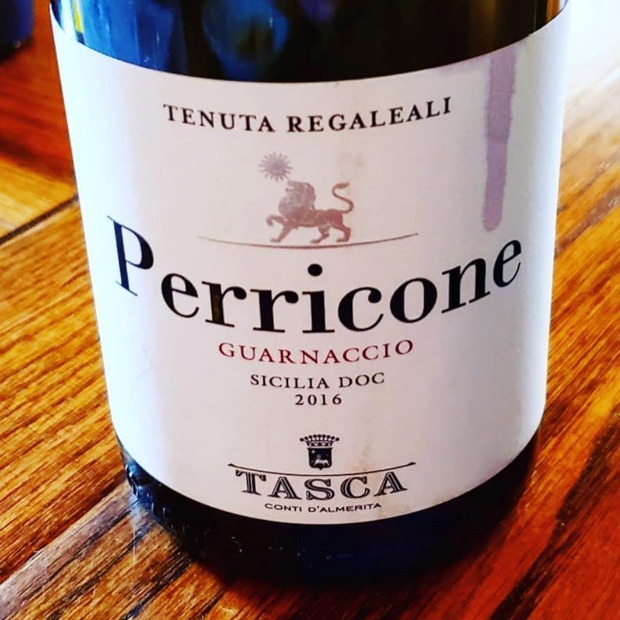
Tenuta Regaleali Perricone Tasca d’Almerita Guarnaccio 2016, Sicilia DOC
The artist also known parochially as guarnaccio is the magical grape variety of endemic proportions that only Sicilia can claim. A wine that will open doors to perception and change the way you see Sicily, not just because it’s different but because it’s exciting. Like cabernet franc with sweet basil, liquorice and sweet peppery plum. Just an ideal vintage, liquid chalky, high acid, full fruit complement and ideal extract. Crunchy like a mouthful of berry rocks. Last tasted May 2019
Endemic perricone is the grape that has always existed at Regaleali, since 1954, in the historical San Lucio vineyard. The massal selection allowed for extending the vineyard, because believing in perricone (always known as Guarnaccio at the Estate) means respecting the winemaking past of western Sicily, which was rich in this grape. Because brother Rosso del Conte was always offering an age able wine, it was decided to bottle this varietal wine for freshness and possibility. It sees 12 months in 2nd and 3rd use barrique. The first vintage was 2012 and there is a sweet nuttiness about this grape made in this way, like marzipan or nougat, with currant red fruit and in a way, like cabernet franc but without any pyrazine intrusion. A note of carob or bokser joins in, advantageous acidity for buoyancy and a calmness without any real demand by tannin. So much pleasure and confidence. Too early in its tenure to know about aging solo but how can confidence not speak to an avowal of yes? Drink 2019-2026. Tasted May 2018
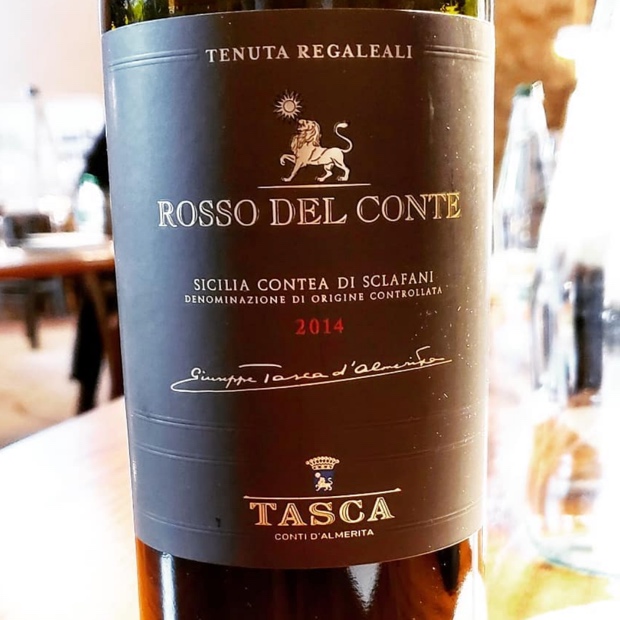
Tenuta Regaleali Rosso Del Conte Tasca d’Almerita 2014, Sicilia DOC
The famous blend of perricone and nero d’avola that does not tread into the danger zone of over ripeness and jam, keeping acidity and running with the devil, for the better part of 50 years. Extremely youthful wine, still reductive, still reeking of its multi-vegetal/floral scents of herbs, legumes, grasses and flowers that grow all around the infamous vineyard. The oak regime is still very much in charge of the fruit and so a vanilla-graphite film rests atop the syrah-like pepperiness of the endemic fruit blend. Should begin talking in a dialect that lends a sense of place in two or three more years time and will be a long-lived RdC. Drink 2021-2032. Tasted May 2019

Tasca d’Almerita Rosso Del Conte 1998, DOC Monreale
The original Super Sicilian is a nero d’avola and perricone marriage though over the years they have swapped place in terms of which one leads. Still a secondary time and place, with fruit coming around again and again, especially at the finish. A perricone bulk head wonder with nero d’avola wings. Very much a creamy chocolate ending that while certainly a matter of oak it’s really quite dreamy and through a connection to earthiness it brings you back to the vineyard. Drink 2019-2021. Tasted May 2019

Baglio Del Cristo Di Campobello
Baglio Del Cristo Di Campobello C’D’C Cristo Di Campobello Rosso 2018, Sicilia DOC
Proper Rosato, of chalk and a faint feign of sweetness, lithe in legerement, no more than two or three hours of free press run. An expression of nero d’avola, of currants and savoury but also sweet herbs. Perfectly salty and in salivation solicitation. That’s what you need and also because there is fruit, real nero d’avola fruit, inclusive of tiny wild strawberries. Only 8,000 bottles are made, out of an estate total of 300,000, in this the fifth year of blush production. Drink 2019-2021. Tasted May 2019
Baglio Del Cristo Di Campobello Adènzia Bianco 2018, Sicilia DOC
The 50-50 grillo and inzolio blend that is the expression of white wine as a philosophy from the estate. A Sicilian dialect word that means “pay attention and take care, to the little details, to something or someone.” A soil enriched white blend with tang, silk, salt and richness. It reminds of some Western Cape chenin blanc with melon and sweet lime flavours filling up a frame built on white crumbling stone and aridity. Good persistence noted from a persistently wet year. Drink 2019-2021. Tasted May 2019
Baglio Del Cristo Di Campobello Adènzia Bianco 2009, Sicilia DOC
Now a look at the 50-50 grillo-inzolio joint going back 10 years and a wine you might not expect to age this long. An estate credo for the dialectical expression that asks to “pay close attention, take care of the things and people you know and love.” Still carries some impressive energy mixed with some warmer fruit like banana and mango, dusted with dried herbs and fine chalky salt. The acidity persists cut with tonic. Better showing than than the 2008 poured here one year ago. Drink 2019-2020. Tasted May 2019

Baglio Del Cristo Di Campobello Grillo Lalùci 2018, Sicilia DOC
And so grillo on its own from Campobello stands alone with a pulse and a stand up to be noticed personality that speaks to a relationship with the land. “A most representative white for us,” says Carmello, “a great variety with a great potential.” Literally translates to “the light,” in reference to times when economics and potential were in the dark. Also means “hope” in light at the end of the tunnel. Rich and sapid, implosive and saline, like peaches sprinkled with rock chalk and fresh basil. Very fresh, very young, at heart. It’s Papa Bonetta who says it best. “I’d like to make a toast with Lalùci, to think positive and see the light in every day of our life.” Drink 2019-2023. Tasted May 2019
Baglio Del Cristo Di Campobello Grillo Lalùci 2013, Sicilia DOC
Two bottles are opened because one is just slightly deeper hued and showing an oxidative note. Each does to an extent which comes us no surprise for a six year-old white from grillo of micro-oxygenated life moments. It’s still reductive, smoky, flinty and like a Sicilian marriage between Bordeaux Blanc and Hunter Valley sémillon. The oxidative bottle is not nearly as smoky or expressive and while it’s not necessarily faulted the advancement must be a result effected by the quality of the cork. It’s actually quite flat in comparison with the sound bottle offering more richness meeting salinity and tension on the palate. More than curious, in fact this is a fascinating look at grillo. Drink 2019-2021. Tasted May 2019
Baglio Del Cristo Di Campobello Laudàri Chardonnay 2017, Sicilia DOC
Tasted last year after only only week in bottle, now the reductive aspect and the equalizing barrel are front and centre in this youthful wine from a very warm and even more so, an extremely arid vintage. The chardonnay vines were planted back when no one wanted wines made from autochthonous grape varieties and here twenty some odd years later have become some important heritage vines for the estate. It’s chewy and structured chardonnay, will be improved in another year’s time and while may not live like some cooler vintage brethren, will still develop more interest. Drink 2020-2023. Tasted May 2019
Baglio Del Cristo Di Campobello Adènzia Rosso 2017, Sicilia DOC
Silky red, fine, refined and thorough. The blend is 50-50 syrah and nero d’avola, raised in large 100hL barrels. Tini in Legno is the tradition, from tanks meeting barrel where the bottom and the top portions are stainless steel. This allow every aspect of the winemaking to be controlled and the technique combines the old and the new. No surprise this is as smooth as you might imagine. There’s a chalky terroir doubled down by the chalky grain of barrel running through the veins of this deep and warming red blend. Drink 2020-2023. Tasted May 2019

Licata hospitality @cristodicampobello is always on point.
Baglio Del Cristo Di Campobello Lusirà Syrah 2016, Sicilia DOC
Lusirà is Syrah in dialectical Sicilian speak. From a micro-climate and a soil that can express syrah with elevated, aerified and intense aromatics. Fermentation in stainless steel and aging in French oak barriques, new, second, third and fourth passage. All blended back together and the result is rich, richer and richest. It’s a silken feeling, a peppery liquidity and good persistence. Highly modified and prepared syrah for pomp, pop and pleasure. Drink 2020-2025. Tasted May 2019

Baglio Del Cristo Di Campobello Nero d’Avola Lu Patri 2016, Sicilia DOC
“The father” is the ultimate red wine expression from Campobello for which all things endemic and traditional are drawn upon for the crafted nero d’avola. The process is the same as Lusirà Syrah, stainless steel fermentation and aging in barriques from one through four years old. Rich as nero d’avola can be, of sweetly endowed fruit and plenty of swagger. This nDa knows exactly what it wants to be, sticks to its guns and tells the world. Look at me, I am nero and I am proud. Drink 2020-2026. Tasted May 2019
Baglio Del Cristo Di Campobello Nero d’Avola Lu Patri 2009, Sicilia DOC
The father, as opposed to “my father,” so that it celebrates all fathers. That and the fact that nero d’avola is the father of Sicilian grape varieties. A patriarchal wine and three different samples are poured. A bit oxidative and musty with some raisining fruit. More freshness and spirit with good acidity in the second but still showing similar to the first. The third is most similar to the first. They are all past their best but all show what nero d’avola can do if treated with hands off kid gloves. The 2016 is an example of the trending direction en route to finding the strange, kind and fine magic. In the end it grows on you to make you think of things that matter. Last tasted May 2019
We tasted two bottles of Lu Patri 2009, the first being a bit muted, not very evolved, a character that could be described as one of slow micro-oxygenation. In the second a minute advancement and I agree with Carmelo that this is preferable, because by now it is clear that all of his wines get better with age. They are not that much fun when stuck inertia-like in their undeveloped youth. The evolution at this stage has brought wild cherry, part fresh (Yes!) and part dried. The acidity is linear up and down the sides of the mouth and the length exceptional. First wine with true chocolate and espresso ahead of the balsamico. The last supper nero d’avola. Truly. Drink 2018-2022. Tasted May 2018
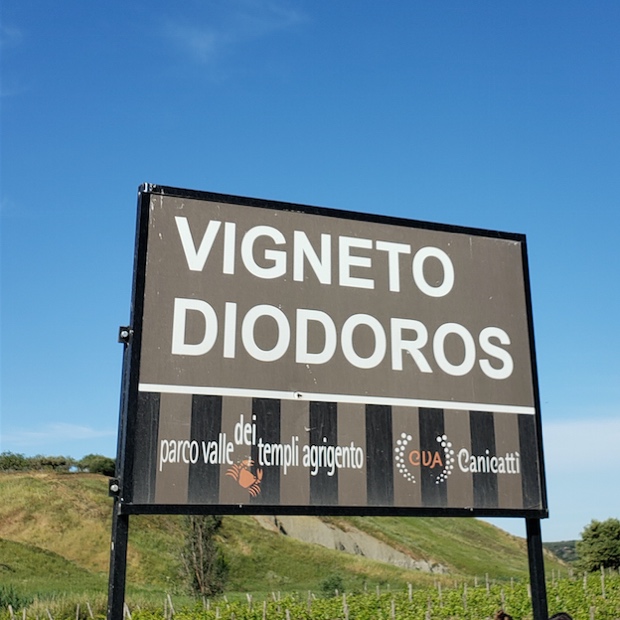
Canicattì
Canicattì Catarratto Aquilae 2018, IGP Terre Siciliane
From the contrada of Aquilata, municipality of Canicattì and the “hinterland” of Agrigento off of limestone and silty soils. The quickest and fruitiest catarratto there just might be, with straight to the point starlight fruit after just a few months of fermentation/aging completion. Like value vermentino or greco, straightforward of recognizable orchard and tree fruit. The minor complexity is like Eledrflower and blanched almond. Simple, fresh, clean and dry. 4.35 euro ex-cellar price. Drink 2019-2020. Tasted May 2019

Canicattì Grillo Fileno 2018, Sicilia DOC
From the municipality of Canicattì and the “hinterland” of Agrigento off of limestone and silty soils. With some higher altitudes at play (up to 600m) this child of zibbibo and catarratto is a spiced, herbal and wildflower grillo, fresh and direct though quite expressive. There’s a fruit tincture meets tin cup sweetness elevated by arranged acidity and garnished by mint. Solid and very drinkable with a minor lemon pith bitter note on the finish. Drink 2019-2020. Tasted May 2019
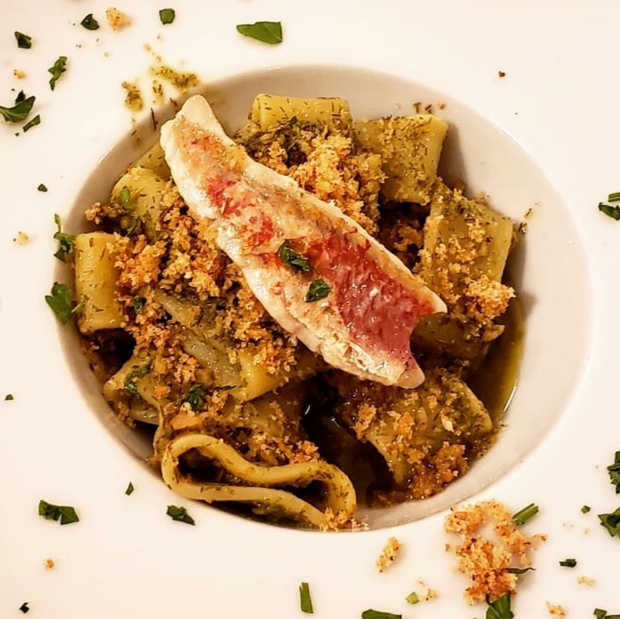
Dining with the boys of @cvacanicatti at #restaurantecaico in #valleditempi #agrigento
Canicattì Grillo Acquilae Bio 2018, Sicilia DOC
From the contrada of Aquilata, municipality of Canicattì and the “hinterland” of Agrigento off of limestone and silty soils. The organic one and like father catarratto it’s a quick ferment and ageing for easy, fresh, sapid and instant access. What is lacks in complexity as compared to the Fileno it more than makes up for it in acidity, clarity and ubiquitous amenability. No over-thinking needed or involved. Fry some small fishes and exhale. Drink 2019-2020. Tasted May 2019

Canicattì Rosato Delicio 2018, IGP Terre Siciliane
From the municipality of Canicattì and the “hinterland” of Agrigento off of limestone and silty soils. The Rosé is 50-50 nero d’avola and nerello mascalese taken from younger vineyards and aged for four months. More about fruit than acids, although the latter’s presence is noted quite prominently. Strawberries, red delicious apple and currants meet sweet herbs and this is ultimately really well made Rosé with nary a bitter moment. Drink 2019-2020. Tasted May 2019

Canicattì Nero D’avola Centuno 2016, Sicilia DOC
From the municipality of Canicattì and the “hinterland” of Agrigento off of limestone and silty soils. Saw 12 months in barriques and the graphite-eucalyptus notes confirm the newness of the aging. That said it exhibits some notable varietal character albeit in a lush, modern, oxy and forward manner. Clearly a wine made with a specific idea and executed plan in mind. Drink 2019-2020. Tasted May 2019

Canicattì Diodonos 2016, Sicilia DOC
Next vintage from the 2010-ish resurrected vineyard beneath the temple ruins of Giunone, off of sandy, alluvial soils at valley floor altitude. This is mostly nero d’Avola two months in tank and 10 in barrels, then six more before release. A sense of place truly comes through from this youthful 2016 with both sugar ripeness and phenolic ripeness walking hand in hand. The 10 per cent coming from nerello mascalese and cappuccio is nicely supportive for a wine that tastes like nero d’avola should. Balanced, bright, fruit full and structured. Drink 2021-2026. Tasted May 2019
Canicattì Diodonos 2015, Sicilia DOC
From a once abandoned and now resurrected vineyard (around 2010) below the temple of Giunone, off of sandy, alluvial soils at valley floor altitude. Varietal nero d’Avola two months in tank and seven or eight in barrels, then six more before release. A sense of place is important because this carries more, albeit some dried fruit varietal character and in spite of 10 per cent coming from nerello mascalese and cappuccio. Chewy, fruit leather character and some finishing bitters. Goes all out for sugar ripeness, pressing and extraction with a minor green seeds astringent note. Drink 2020-2024. Tasted May 2019
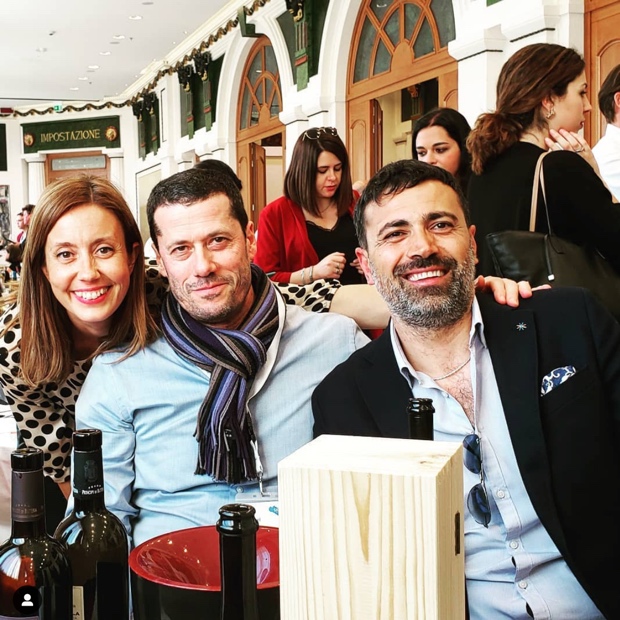
It is such a pleasure to travel across oceans, to talk, taste and learn with friends, colleagues and wine’s sharpest minds ~ at #siciliaenprimeur with @principidibutera @antoniopaolofroio and @alessandrazambonin
Feudo Principi Di Butera
Feudo Principi Di Butera Grillo 2018, Sicilia DOC
The child of zibbibo and cattaratto, a recent story actually, from an agronomists’ experiment. This is “A” type of grillo, also know as the “green one,” as opposed to the “B’ used in sweet Marsala production. The green association is a sauvignon blanc one. The verdant character may be present but plays second and third strings to the freshness and the acidity. Implosive grillo and salivating quite frankly. Drink 2019-2021. Tasted May 2019

Feudo Principi Di Butera Inzoila 2018, Sicilia DOC
A new soil which is both a blessing and a curse, a pain and a joy to work with. Quality comes from lower yields and specific soils. Here inzolia grazes into hyper-metallic and mineral territory, protected from the heat of the sun, in avoidance of saturated copper, sunflower and gilded gold. Very short skin-contact and nurturing care turn inzolia into this, sapid and even salty, expressive of the calcareous soil and the sea breezes coming from a mere eight kilometres away. Drink 2019-2023. Tasted May 2019

Feudo Principi Di Butera Inzoila Séro 2018, Sicilia DOC
Serò is inzolia that saw some time in old barrels and also extra time in bottle. It has maintained its vineyard and atmospheric character while also carrying an oxidative note in opposition to the reductive sibling. Takes the varietal out of vintage and into something structured, with tonic spirit and implosive tang. This is surely something new for inzolia, to be taken seriously into something from a winemaker’s (Paolo Antonio Froio) imagination and beyond. The finish adds toasted chestnut and brown butter, not atypical for wines that pass through Bourgogne barrels. Drink 2019-2025. Tasted May 2019

Feudo Principi Di Butera Syrah 2017, Sicilia DOC
The first red to harvest in August at a time with less of a probability to face climate stress. It’s rich, spicy, liquid chalky, peppery and finishing with a minor note of creosote or mesquite. The vintage only accentuates the character, concentrating floral aromas and fine-grained structure without compromise or consequence to über-heightened flavour. A third is put to 350L tonneaux and it shows, in depth of accent and overall composition. Drink 2020-2026. Tasted May 2019

Butera Pasta
Feudo Principi Di Butera Nero d’Avola 2016, Sicilia DOC ($18.95)
Find another nero d’avola that smells like this. I dare you. It’s wildly floral, feral and meaty but not really a matter of sauvage. The fruit optimization and concentration is simply unparalleled and while extraction is ambitious this never gets into over mature berries and cherries. Right now there is strawberry and the just ripe cherry but not so far away are balsamico, tobacco, truffle and all things leather. Only large botti and no tonneaux are used, in respect to the terroir. Last tasted May 2019
Really complex perfume, jumping from the glass, fresh, vital, from large plantings that make up more than 50 per cent of the agriculture. It’s both dark red fruit expressive and also herbal, of fennel and then a territorial limestone impression running through the fruit. Quite chewy and expansive in the mouth, all a result of stainless fermentations followed by older, larger barrels, 30 and 50 hL. Gives a broad, soft, elasticized and stretched palate texture with no departure from varietal and place. Very focused, clean, modern interpretation with no excesses, attitude or conceit, nor ambition neither. Drink 2018-2021. Tasted May 2018
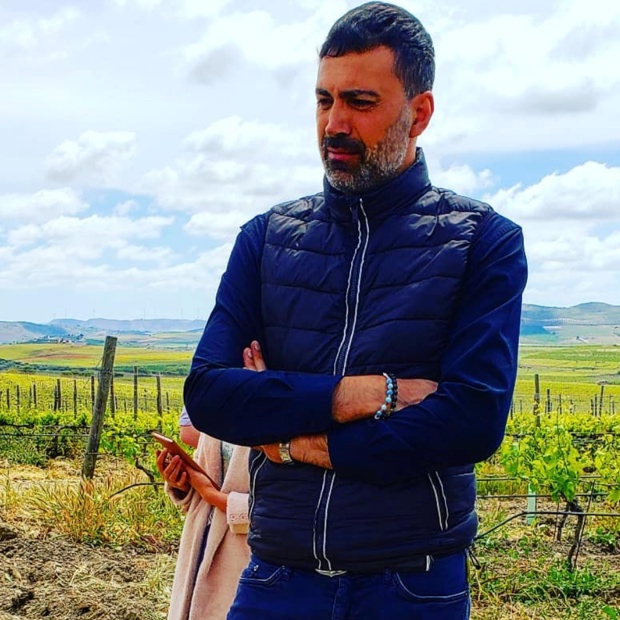
The man, the thinker, the legend- Antonio Paolo Froio @principidibutera ~ calcaire soils, focused wines, ocean breezes, calming vistas and @zoninwines hospitality. A perfect Sicilian storm.
Feudo Principi Di Butera Nero d’Avola Deliella 2015, Sicilia DOC ($55.00)
Take everything you think you have come to know about a Butera nero d’avola and begin to multiply, extrapolate and exaggerate. High acidity and a mentholated accent work with the dark purple fruit. Did not think the “normale” was one dimensional but this makes that wine seem simple by comparison. Only the best berries are chosen and only those of the right size and dimension. Precision and focus define this structured wine first produced in 2000 and one that has the potential to age gracefully for up to 20 years. Last tasted May 2019
Deliella is a selection in the vineyard, from edgy, prurient and analytical investigations in special vineyard blocks with maximum of five bunches per vine to find more concentration from each vine. It’s actually quite a taut and reserved nero d’avola with a slow release of aromatics and charm, dark liquid fruit chalky, structured and quite calm. Takes its time but the acidity carefully climbs up and down the sides of the mouth to stress its position in the overall architecture. Aged in 30 hL casks (and larger tonneaux) for 14 months. There will be some extended longevity here, not forever but likely five to seven years. Drink 2019-2024. Tasted May 2018

Feudo Principi Di Butera Nero d’Avola Deliella 2013, Sicilia DOC ($55.00)
From a time before Antonio Paolo Froio took over the winemaking duties and yet you can’t help but notice the terroir in this single-vineyard nero d’avola. Blacker fruit than red and plenty of spice. Although the oak-aging is stronger than perhaps what needs the fruit persists, the acidity is vibrant and supportive and the concentration handles tannins with great ease. Love the way the caress in energy remains in charge and expressive over the palate. Still very youthful but if you’ve tasted more recent vintages it will then come as no surprise. Very capable wine. Drink 2019-2024. Tasted May 2019

Sparkling Wines

Cantine Nicosia Sosta Tre Santi Carricante Brut Metodo Classico 2016, Sicilia DOC ($55.00)
Varietal carricante from Catania province carrying true green character, lime over lemon and dried herbs. Great grape spirit, high elevation airy tension and flavours promising orange zest, spry and finishing fine bitters. Make use of this ambitious, finely leesy and refreshing sparkling wine as a most excellent aperitif. Drink 2019-2023. Tasted May 2019
Cantine Nicosia Sosta Tre Santi Brut Metodo Classico 2014, DOC Etna ($55.00)
The use of nerello mascalese is certainly intriguing for traditional method sparkling wine, here from volcanic soil on Etna. The varietal character is not without its obviousness in light berry meets currant aromas and then the citrus aspect of red fruit takes over on the palate. Tart in just the right way, balanced and driving steady right down the middle of the road. Drink 2019-2022. Tasted May 2019
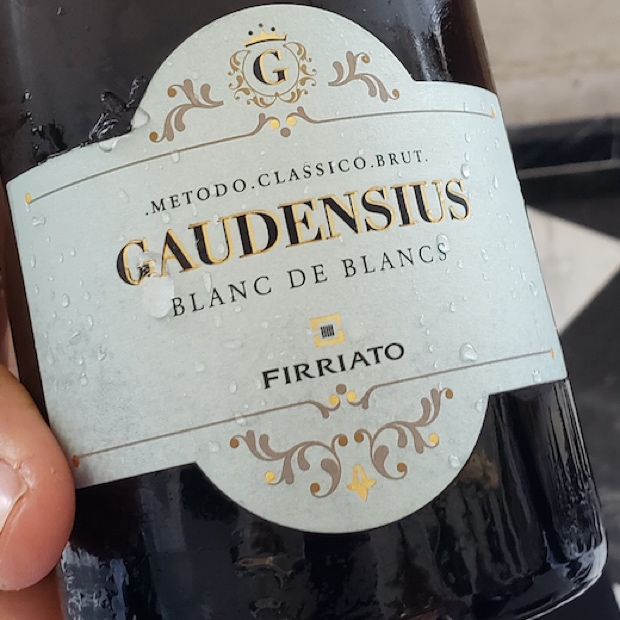
Firriato Gaudensius Blanc De Blancs, IGT Terre Siciliane
Labeled as B de B though a 50-50 carricante and chardonnay joint from Catania province with sulphur and citrus dominating the intensity on the nose. Leesy and creamy with some lemon pith for what adds up to a disparate and meandering sense of pleasure. Drink 2019-2021. Tasted May 2019
Casa Vincola Fazio Grillo Spumante Brut, Sicilia DOC
Here grillo from Trapani delivers the basics, with some sugar residually noted and not entirely captured by quick acting fermentation and acidity. Very peachy as per the varietal, the technical guru’s instruction and the method. Drink 2019-2020. Tasted May 2019
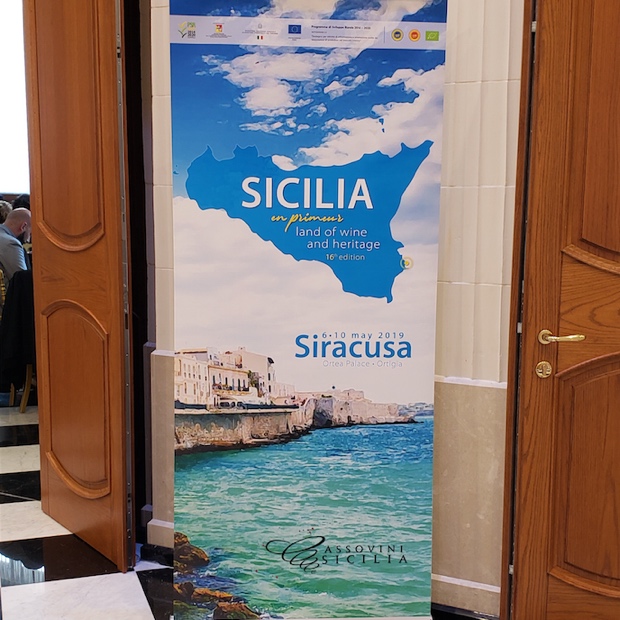
Sibliana Due Sorbi, Sicilia DOC
Trapani raised grillo supports a supple and fairly still bubble with concrete and lime aromas leading to a gain of ascension on a palate that comes as quite a pleasant and tension filled surprise. Goes herbal and tannic at the finish. A program with plenty of potential in need of more lees, more acidity and more time. Drink 2019-2021. Tasted May 2019
Sibliana Grillante, Sicilia DOC
Grillo from Trapani in Grillante form is much more direct, dry, intense and ultimately refreshing. There’s a true lemon and lime spirit in this simple, effective and really well made, balanced and focused bubble. Drink 2019-2021. Tasted May 2019

Tenuta Gorghi Tondi Palmarès Brut
Grillo of no specific production zone is a child of Trapani provincial heritage (Mazara del Vallo, south-western Sicily) and it’s one of the more leesy sparkling wines in Sicily. That and great acidity balance out the sweetness and the creamy consistency. Kind of goes for all out broke to layer and solicit pleasure, albeit with quite a whack of flavour packet concentration. Drink 2019-2021. Tasted May 2019
Firriato Gaudensius Blanc De Noir, DOC Etna
Mount Etna, nerello mascalese and downright intensity are the triad of notation from a sparkling wine of great freshness and drive. The lime notes are there from start to finish and there’s a reductive and peppery green apple bite, with an amazing note of green nasturtium seed. This would pair so well with a salad augmented by salty chèvre or feta with nuts, seeds and fresh nasturtium. Like a Brut Zero from Franciacorta, in a way, with great length and potential right here. Drink 2019-2023. Tasted May 2019
Feudo Principi Di Butera Nerlouce, DOC Sicilia
A 100 per cent Charmat method nero d’avola that was first produced in 2018 to initiate a sparkling wine program under the guide of winemaker Paolo Antonio Froio. The new traditional method program will launch in 2020 from the 2016 vintage and this “black light” is a careful play on words for a varietal wine made light, fresh, fruity and a touch sweet from the dark-hued red grape. It’s vibrancy is very useful for midday sipping under the Butera sun with a cool breeze and a view across the surrounding hills. It’s just the beginning of a long sparkling relationship ahead. Drink 2019-2021. Tasted May 2019
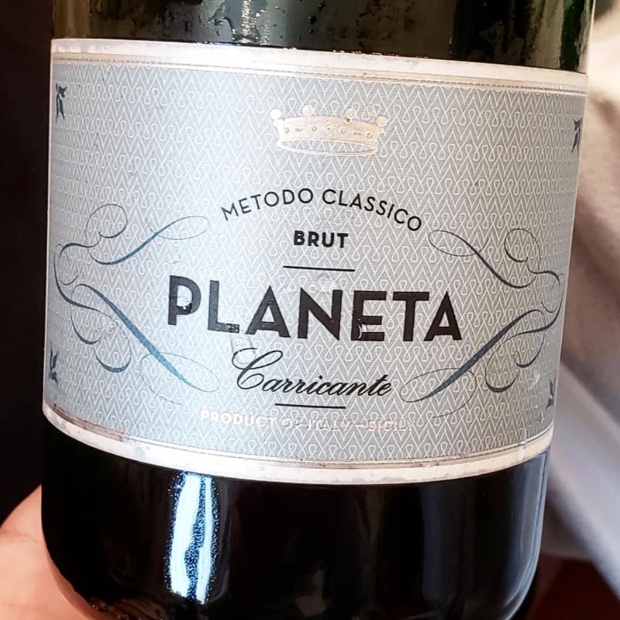
Planeta Carricante Brut Metodo Classico, DOC Sicilia
The varietal classic method sparkling wine come from the same vineyard as the Eruzione, picked around the 20th of September. First bottles were made in 2009 and first commercial release was 2010. Today the vintage (2015) is defined but actually on the back label. Stoic and sharp, attention grabbing and if short of eruptive, still blowing ash, smoke and pumice. So to speak of course but there is true intention, pet up tension and after a sip, release. Drink 2019-2022. Tasted May 2019

Gurvinder Bhatia
Whites from Etna

Cottanera Etna Bianco Contrada Calderara 2016, DOC Etna
Salty volcanic single cru Etna Bianco (at 750m) with a distinct lava-wild finocchio aroma that demands immediate attention. Also quite floral with as much of a sense of place in pocket as any carricante from anywhere on the volcano. Some tonic and ginger-orange bitters mark the back end in finale. Drink 2019-2024. Tasted May 2019

Cusumano Alta Mora Etna Bianco 2018, DOC Etna
Herbal, rich and lightly salty carricante with yeoman acidity and good soil derived tang. Quickly on the lime and savoury herb angle without equivocation. Basic really and perfectly serviceable. Drink 2019-2020. Tasted May 2019
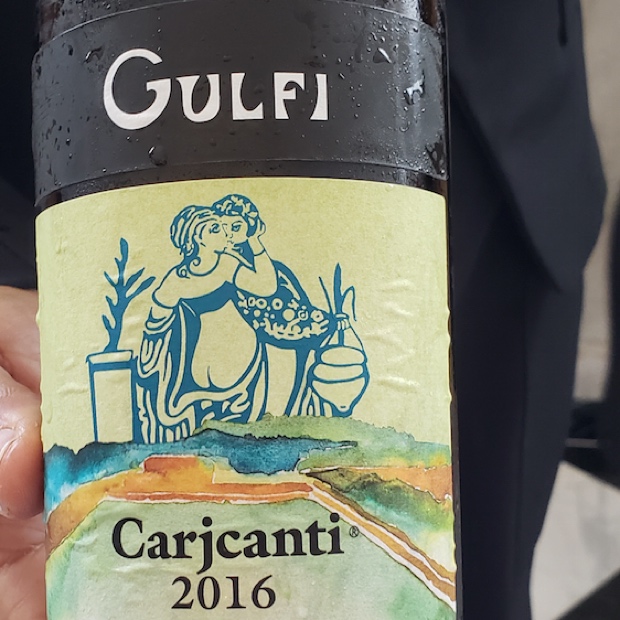
Gulfi Carjcanti 2016, IGT Terre Siciliane
Highly curious and salty savoury carricante from Gulfi, apposite to Etna Bianco in more than simple denominational ways. It’s flinty reductive, white peppery and bloody spirited stuff, a Ragusa white of parochial and carefully if rebelliously constructed purpose. The tart aspect is angular to implosive and the length a matter of exceptional extract and tannin, if not necessarily acidity. It’s a different sort and so worth the visit. Will age really, really well. Drink 2019-2026. Tasted May 2019
Pietradolce Sant’Andrea Bianco 2016, IGT Terre Siciliane
This Catania Bianco is quite evolved in its own idiosyncratic way, with a barrel influenced note that still indicates reduction in a wine that has clearly seen its share of oxygen. The paraffin and beeswax are just ahead of what soon will be honey and lemon curd entangled romantically for soft lighting and music. A natural, in the local demure of dimly lit carricante for those who need to get lost in their wine. Drink 2019-2022. Tasted May 2019

Pietradolce Etna Bianco Archineri 2018, DOC Etna
The Archineri cru brings the most laser-like and saltiest intensity to carricate from Etna. It’s a syringe filled with concentrated lemon and grape spirt injected into the utmost varietal conjecture that can be captured from this volcanic moonscape. Such a crunchy mouthful of lava, basalt and love. Drink 2019-2025. Tasted May 2019

Pietradolce Etna Bianco 2018, DOC Etna
The Etna Bianco normale from Pietradolce shoots less of a laser shot into carricante and while it may be seen as rounder and more amenable than the Archineri and it is a perfectly knowable introduction to Etna Bianco. You should and will not be fooled for its honesty. It shoots from the hip and means serious Etna business. A must have for licensees and those who just want to share the volcano with friends, enemies and colleagues. Drink 2019-2022. Tasted May 2019
Vivera Salisire Contrada Martinella Etna Bianco 2015, DOC Etna
Salsire is by now well accumulated in character from time and evolution to bring a lovely sense of that secondary expressiveness only carricante can do with idiosyncratic oath. It’s round and full of lemons in many respects; juice, curd and zest. Has come to where volcanic Etna can and will. It just is, that’s all there is and it’s alright. Drink 2019-2021. Tasted May 2019
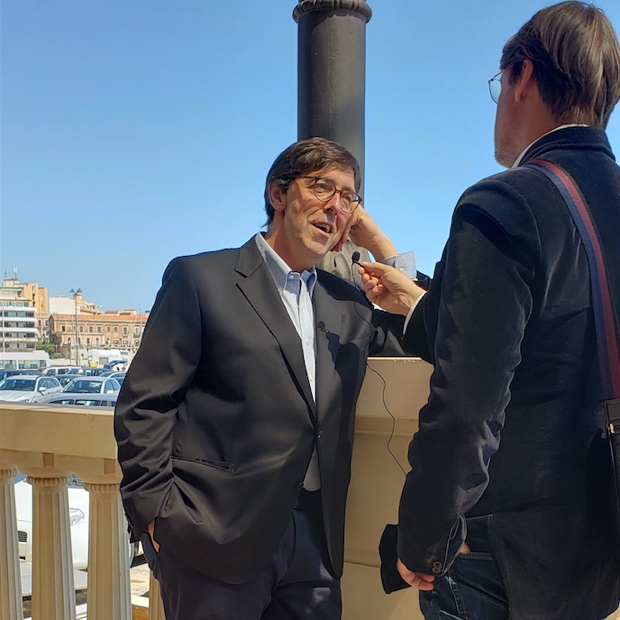
Alessio Planeta
Planeta Etna Bianco 2018, DOC Etna
Planeta’s Etna Bianco is the poster child, smiling face and sharp as a tack example, also carrying a smirk and an all pervasive knowing of what do to. This fruit and the way it is handled go hand in hand with what you want, need and desire from carricante, volcanics and winemaking. There is substance, a serious basaltic injection and more fruit than most white grape varieties are capable of giving without gushing, cloying or tropically distracting your attention. Such an ideal vintage too. Drink 2019-2023. Tasted May 2019

Planeta Eruzione 1614 Carricante 2017, Sicilia DOC ($42.99)
Eruzione lies in wait, impulsively structured, set marbled in state as an implosive carricante (with five per cent riesling) class of its very eruptive own. It is a mimic of its volcano, a wine spewing smoulder and gaseous aromatics surrounding a core of fruit so compact, connected, exacting and protected. Perhaps a misunderstood and even strange vintage advance but in a world’s away way the evolution will take time to unwind and reveal what lays behind. There is nothing like fantasy and musical sci-fi imagery in a wine of such mystery and we’re all better off to be caught up in the presence of this great unknown. We’ll find some things out when this casts in a future light so for now, just enjoy whatever laser light show and sonic beeps happen to come your way. Drink 2021-2029. Tasted May 2019
Torre Mora Etna Bianco Scalunera 2018, DOC Etna
Scalunera is a new player steeped in Etna volcanic tradition from the house that Puccini built. The carricante fruit is highly augmented with complexities of almond pit, peach blossom and soft marzipan. It’s both herbal and fruity with these accents providing the salve greeting proviso to consumer pleasure. Can’t go wrong here. Drink 2019-2022. Tasted May 2019
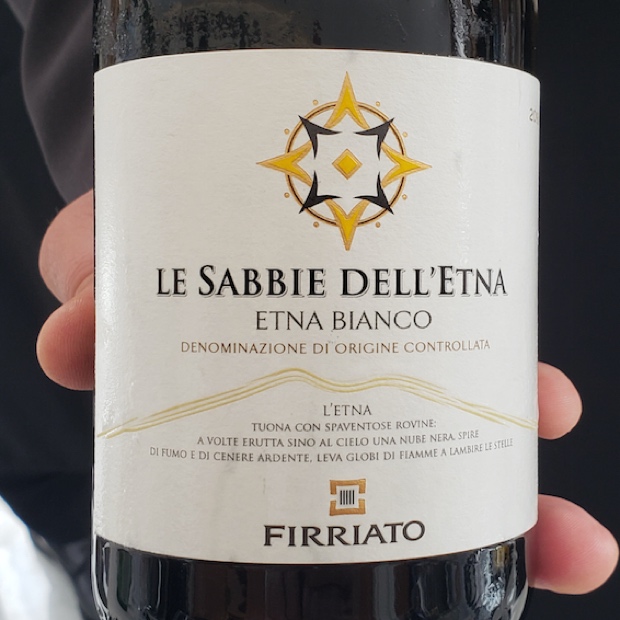
Firriato Le Sabbie Dell Etna Bianco 2018, DOC Etna
The blend of carricante and catarratto (60-40) from the sandy basalt on Mount Etna is a rounder and more herbal pesto expression with sweet verdant personality and very lime driven flavours. It’s the salsa verde of Etna with fine acidity and true salinity. Golden and purely pleasurable, if slightly metallic Bianco. Drink 2019-2021. Tasted May 2019

Firriato Cavanera Ripa Di Scorciavacca 2016, DOC Etna
This Firriato carricante-catarratto blend (60-40) takes an about face turn away from the Sabbie sister and goes more linear, direct and intense. Still verdant but this time less herbal and more reductive, with green apple bite. A bigger and more focused and extracted Etna Bianco with more bones and further potential to develop beneficial bitters and secondary notes. Drink 2020-2024. Tasted May 2019

Tornatore Etna Bianco Pietrarizzo 2017, DOC Etna ($34.00)
The cru Pietrarizzo concentrates fruit, style, cause and effect in a carricante (with 10 per cent catarratto) that really builds texture upon a core of stability. There’s a lemon layering as mille-feuille as any on the mountain from which mouthfeel and balance are well-afforded time, grace and place. This is the quintessentially responsible, responsive and remonstrative Etna Bianco. It’s giving, generous and free-spirited, taking cleanest fruit and bringing a Contrada’s specificity to light. Drink 2020-2027. Tasted May 2019
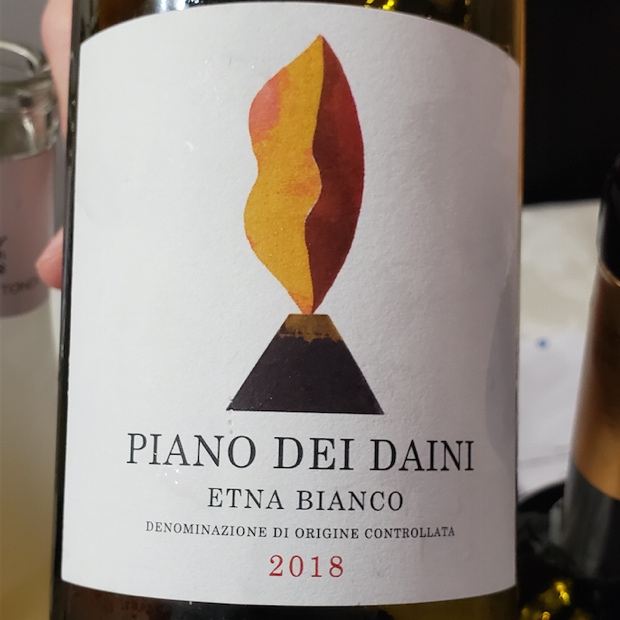
Tenute Bosco Piano Dei Daini 2018, DOC Etna
If any other Etna Bianco were considered round and generous previous to now, this from Bosco re-writes the script. The fruit is quelling, welling and so up front, mostly citrus in orientation but aromatically speaking this bursts from the glass. Extreme freshness with heavy prejudice towards immediate gratification brings you in and keeps you fascinated. A gregarious wine with a solid core and a karst from bones that bodes very well for the future. Drink 2019-2026. Tasted May 2019
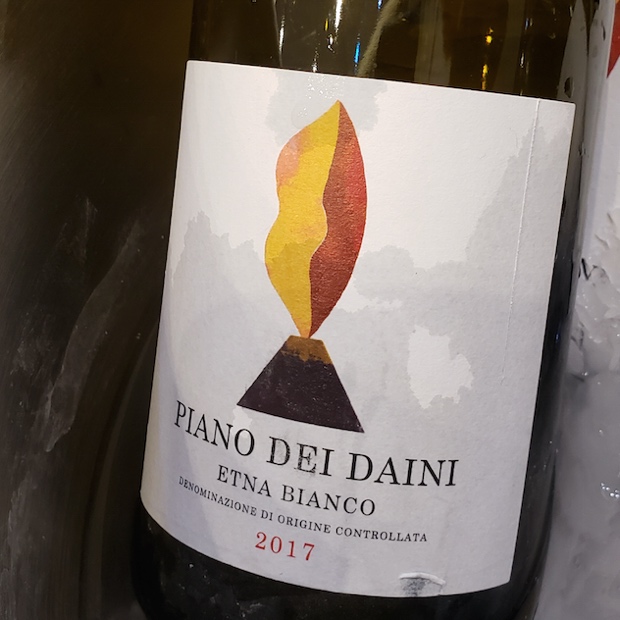
Tenute Bosco Etna Bianco 2017, DOC Etna
A blend of the two contrade (Santo Spirito and Pian dei Daini) made with 90 per cent carricante blended into by catarratto and inzolia. A triad of clean clarity, salty aromatics and confident fruit unction. Meyer lemon to peach and a metal-mineral set of moments. Basalt tang and pure intensity with persistence to just an amount you would ask for and to manage the bites you are enjoying from various depths plucked out of the sea. Drink 2019-2024. Tasted May 2019
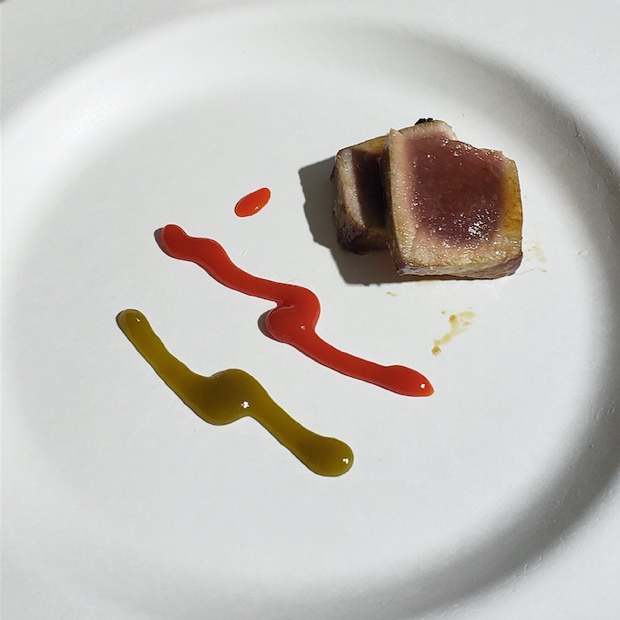
Assorted Whites
Rallo Bianco 1860 2017, DOP Sicilia
No member of the Rallo family remains a part of the winery yet that need not distract us from a catarratto out of the terroir in Patti Piccolo ad Alcamo,with luminous acidity plus low and slow developed phenolics. The fruit has come full growing cycle circle so that the pith is truly a part of the lushness that flirts with the tropical. Organic, perfectly bitter and so drinkable. Nothing neutral or boring here. Should develop a sense of caramelization by way of flinty, smoky and smouldering ways. Drink 2019-2025. Tasted May 2019
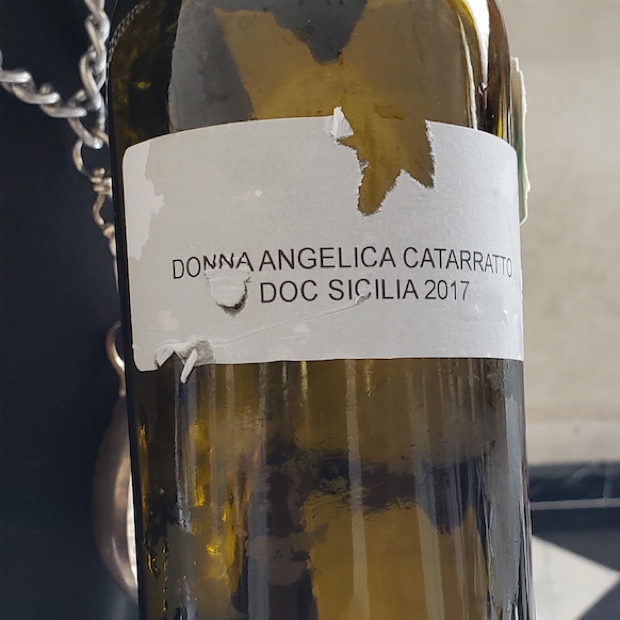
Assuli Donna Angelica 2017, DOC Sicilia
A sample somewhat metallic, oxidative and quite glycerin in texture, of catarratto, grillo and zibibbo in the production area of Mazara del Vallo. A completely different style of extraction, longer maceration and lots of richness. Certainly a style and one that will solicit a consumer who likes their fruit and their metals. Drink 2019-2021. Tasted May 2019
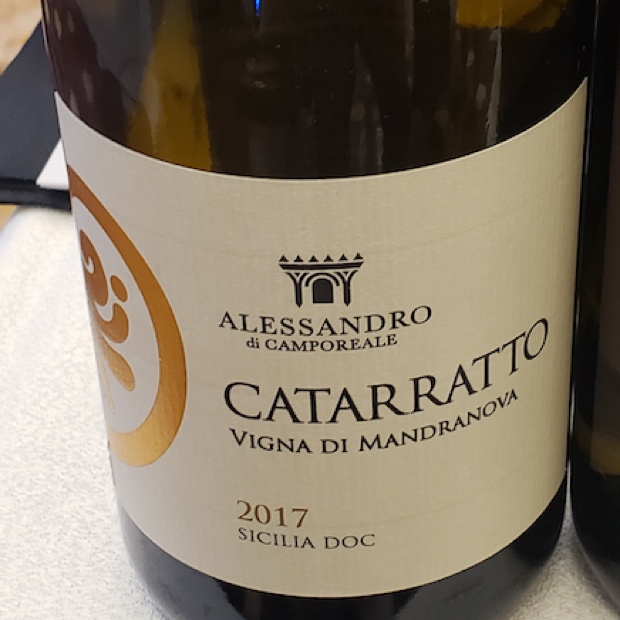
Alessandro Di Camporeale Catarratto Vigna Di Mandranova 2017, DOC Sicilia
The parent of garganega (Soave and Gambelara) is a firm, giving and well endowed in acidity catarratto from this single vineyard in Agro di Camporeale. Some wood aging adds tonic and marzipan to what began as a smoky varietal wine. The concentration can handle the movement through wood so that basalt, fruit and elemental fineness all get on the same page. Quite complex and morbido (in two languages) at the finish. Drink 2019-2021. Tasted May 2019

Centopassi Terre Rosse Di Giabbascio R14 2014, IGT Terre Siciliane
From a warm area in San Giuseppe Jato on the northwest part of the island and a cooperative on lands confiscated from the mafia. Long aging adding up to nearly four years in tank plus barrel make for a tannic, evolved, metallic and soft catarratto. Full development and extract of all phenolics available in a wine predicated on winemaking above all else. Drink 2019-2020. Tasted May 2019
Feudo Arancio Bianco Riserva Dalila 2017, DOC Sicilia
The blend is grillo (80 per cent) and viognier from Contrada Portella Misilbesi in Sambuca di Sicilia. Very yellow orange, quite muscat like with sauvignon blanc lime, floridity and florality. It’s like how that grape can seem botrytis affected because of the peach sweetness and noble rot sensation. Nothing exciting but surely has its place. Drink 2019-2020. Tasted May 2019

Le Casematte Peloro Siclia Bianco 2018, DOC Sicilia
A blend of grillo and carricante, more than 60 per cent is grillo and yet the carricante develops the good and plenty complexity from high toned aromatics. A flinty and striking scintillant with laser sharp flavours. Lovely wine, focused, mineral, salty and fine. Drink 2019-2024. Tasted May 2019

Dei Principi Di Spadafora Catarratto 2018, IGP Terre Sicilane
Out of northwest Sicily, of land and respect for nature first. An organic vineyard, 100 hectares, 215,000 bottles produced annually. From sand and marl, essentially argiloso, so a very Good texture, some peach and almond pit notes that are gentle and influential. Lovely wine. Drink 2019-2022. Tasted May 2019
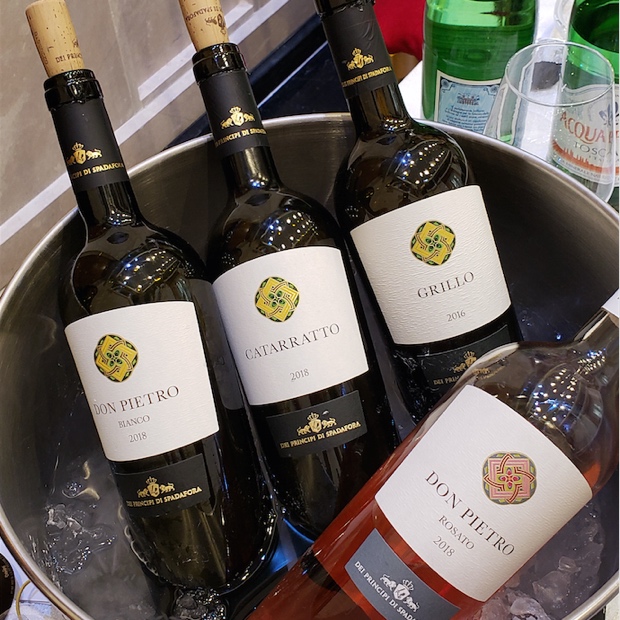
Dei Principi Di Spadafora Don Pietro Bianco 2018, IGP Terre Sicilane
A 50-50 split of catarratto and grillo, named for Enrica’s grandfather who first made this wine in 1993 and named it as such in 1994. The grillo adds sunshine but this is in fact more amenable and understandable with a different sort of mineral, here in alloy conglomerate accumulation. A beautifully arranged appellative blend. Drink 2019-2021. Tasted May 2019
Dei Principi Di Spadafora Grillo 2018, IGP Terre Sicilane
Grillo is held back two years, one in concrete tank and one in bottle, to mitigate the potentially obstructive freshness though more so, like riesling, a little extra time will bring more balance and delight. There needs to be middle ground between the old oxidative grillo and the new must drink in the first six months style. This is the compromise but even better the right way to accomplish what’s right, proper and necessary, And one to age as well. Drink 2020-2025. Tasted May 2019

Planeta Allemanda, Sicilia Noto DOC
A dry moscato (de Noto) that ranks as one of most aromatic you are likely to come across. While it is dry there’s a sweet and savoury tug at once herbal and then metallic enough to pique your interest straight up into the atmosphere. Drink 2019-2021. Tasted May 2019
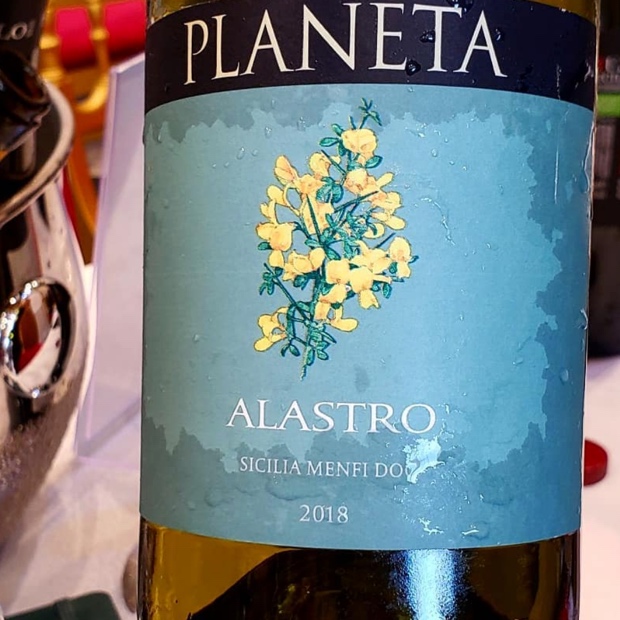
Planeta Alastro 2018, Sicilia Menfi DOC
A varietal sauvignon blanc from the unheralded and exceptional outpost of Menfi which just may be Sicily’s version of the wild, wild, west. This is a searing, straight-shooter, powerful, elegant, direct and unintentionally ethereal. There’s a punchiness, a fruit punch lag and great mineral thoughtfulness. All terroir right here. Or if you could make riesling in Sancerre, when done well, this is what it might be. Drink 2019-2023. Tasted May 2019

Planeta Cometa 2018, Sicilia Menfi DOC
Cometa has changed or rather in its youthful state of ultimate reductive freshness is so straight-laced, linear, tightrope walking along a razor sharp edge. There’s a tonic injection that helps to propel it forward and the envisioning projects two years ahead to see it develop some sweeter fruit notes, straight from the orchard’s hip. Watch for this special vintage of fiano, the ancient noble variety from Campania that Planeta’s braintrust took a well-advised flyer on in the 1990s. Drink 2020-2026. Tasted May 2019

Planeta Didacus 2016, Sicilia Menfi DOC
The chardonnay dedicated to Diego Planeta, from the oldest Menfi vines, planted in 1985. The name Didacus is indeed Diego in Latin and the inherent plus inferred further meaning is as thought, a didactic one, which says something about many things. It speaks to the pioneer Mr. Planeta’s two-toned, ahead of its time work and to the way chardonnay takes Sicily into another realm and brings reductive freshness into buttery bites that ties two voices together. And they will speak as one. Soon. Drink 2021-2027. Tasted May 2019

More dry #zibbibo please ~ tasting a diverse lot @siciliaenprimeur ~ terrific wines
Zibbibo
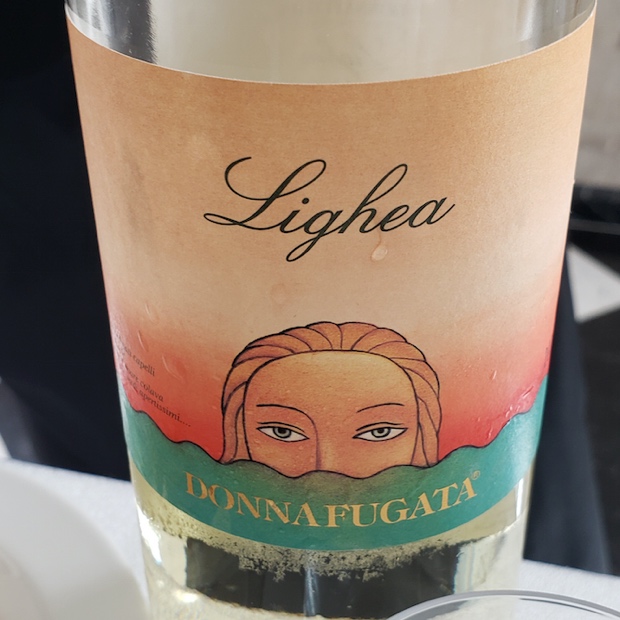
Donnafugata Lighea 2017, DOC Sicilia ($27.99)
Now into the lost art of grillo’s parent zibbibo, a once dominating Sicilian grape that can and will demand your attention when made this way. Like muscat with greater acidity and metal-magic ability, zibbibo carries fine lime and grapefruit bitters like the best of riesling and with a florality that intimates gewürztraminer. Just this example will tell you why some winemakers choose the skin-contact route with a grape that’s such a chameleon and able to maintain acidity plus structure without heading out to salve pasture. Prime example of that right here, finishing with a perfectly tart, just bit into green peach. Drink 2019-2023. Tasted May 2019
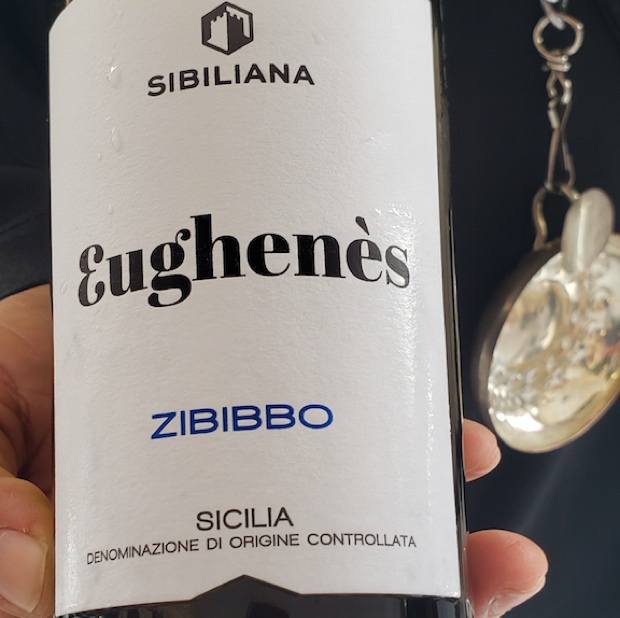
Sibliana Eughenes Zibbibo 2018, DOC Sicilia
Another example of dry zibbibo here with less petrol and floral notes but so much citrus fruit. Along with the lemon and lime comes that grapefruit and zesty orange. It’s amazing how it’s expressive of all this plus the kind of bitters that really tie the zibbibo room together. Some will find it challenging but the linger and length are nothing short of remarkable. Drink 2019-2022. Tasted May 2019

Tenuta Gorghi Tondi Rajàh 2018, DOC Sicilia
Yet again another sort of zibbibo and even within the dry spectrum we see the versatility and diversity of this disappearing variety. More verdancy, herbal pesto, honey dew melon and unction now, with the floral return in lily of the valley and then some drops of orange in a tincture of coriander, stem and hay. The grassiness here is more sauvignon blanc than riesling or muscat and yes, a new way to look at dry zibbibo. Drink 2019-2021. Tasted May 2019

Rallo Al Qasar 2018, DOC Sicilia
The richest and sexiest of the five zibbibo tasted in this flight, of tropical, glycerin fruit and spicy white pepper. Surely less arid than the others, rounder and with added metallics. Drink 2019-2020. Tasted May 2019
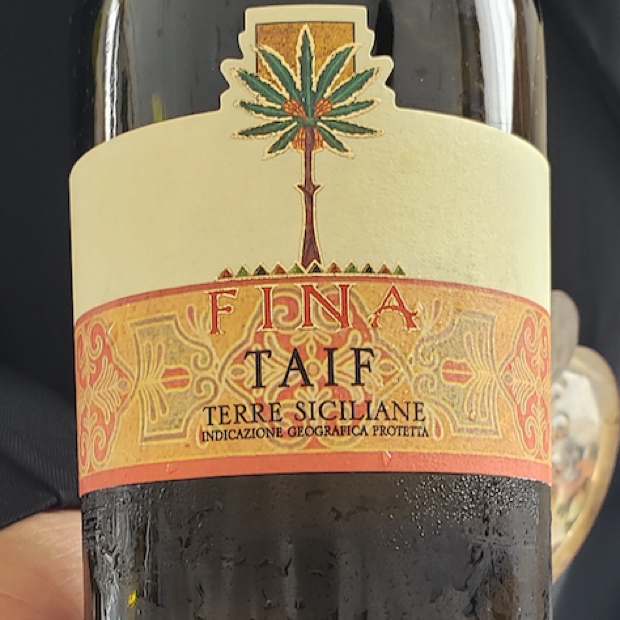
Fina Taif Zibibbo 2018, IGT Terre Siciliane
Taif is zibbibo from Trapani and once again it’s profile and style is unlike any of the other four tasted in this flight. Though linear, high in striking acidity and certainly lemon-lime focused it’s also an aromatic white of texture and mouthfeel. Brings the muscat nose and zibbibo palate capability together for balanced culpability. Just a terrific example of pleasure meeting structure for the next five years of tight and copacetic togetherness. Drink 2019-2023. Tasted May 2019

Sunset over Siracusa
Rosato
Spadafora Dei Principi Rosato Don Pietro 2018, IGT Terre Siciliane
A wild strawberry and mildly earthy-funky Roasto without any bones about who he, she or they happen to be, which coincidentally is nero d’avola of the quickest press for just a hint of varietal inclination. Tart, tight, salty and direct, the brain with knowable and nodding understanding. Serious and who cares at the same time. Drink 2019-2021. Tasted May 2019

Cottanera Etna Rosato 2018, IGT Terre Siciliane
Well, now this is really something in nerello mascalese Rosato. It seems at first so fruity, amenable and commercial. The masses will love its fruitiness and what seems like the right amount of sweetness. Then it turns, salty and fine, complexities woven through the extract of time, tannin and crushed rocks sprinkled with lime. It’s chameleon ability to now reel in the the intellect and the discerning one is something to behold. Smart, funny and so charming. Drink 2019-2023. Tasted May 2019

Tenuta Gorghi Tondi Rosa Dei Venti 2018, IGT Terre Siciliane
A lovely dry and herbal Rosato with a distinct rose petal aroma that leads to saltiness and real Provençal styling on the palate. It’s the way nerello mascalese can imitate, intimate and walk the walk of such a stylistic. Really well made in that regard. Drink 2019-2021. Tasted May 2019
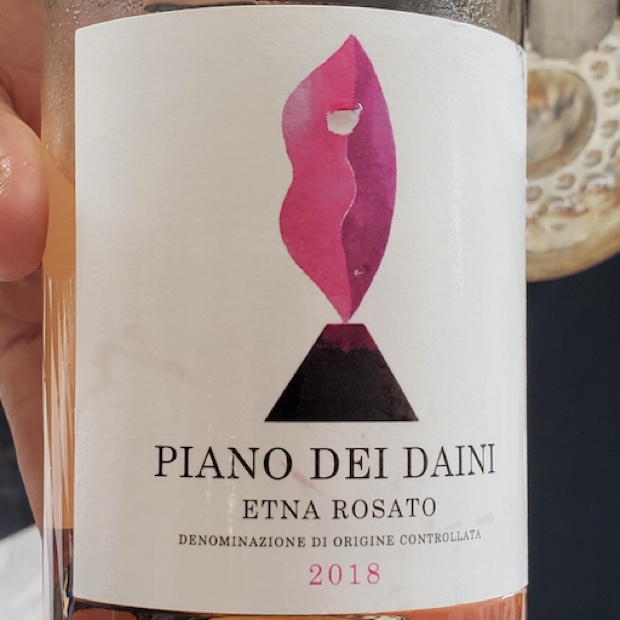
Tenuta Bosco Rosato Piano Dei Daini 2018, DOC Etna
Daini’s is recognizable nerello mascalese in Rosato styling and clothing with its tart aridity and fruit of a cranberry, currant and pomegranate vein. If that makes sense to you then read on. There’s a red citrus notation that some Rosés just seem to acquiesce and I tend to find it polarizing for those who like Rose. In this instance it can be imagined to work really well for grilled meats. That much I know. Drink 2019-2021. Tasted May 2019
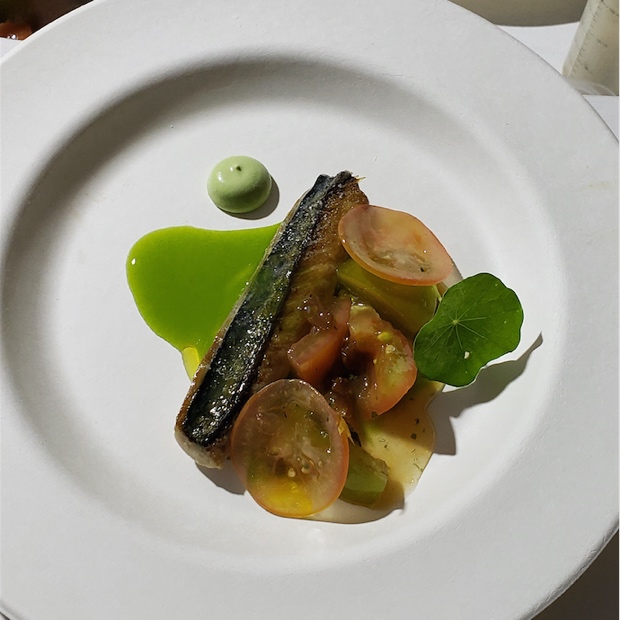
Tenuta Bosco Etna Rosato 2018, DOC Etna
Rosato from only the pre-phylloxera vines found in Santo Spirito and yes, this is Rosato from those grapes, albeit at the lowest part of the vineyard. The saltiest (within perfect reason) and great fruit concentration rosato that makes you wish you could have the bottle all to yourself. A natural extract sweetness that Rosé so rarely gifts. Just ideal. Drink 2019-2024. Tasted May 2019

Pietradolce Etna Rosato 2018, DOC Etna
Pietradloce does Rosé with certain weight, not in density or heaviness but in magically drawn dry extract and grape tannin. Though it’s lithe Rosato made like a white wine from local nerello mascalese it comes across as a red because the unspoken and hidden possibilities in that extractive process bring trace minerals, elements and earth that most don’t find the way to do. Curious, expressive and with some serious potential. Drink 2019-2021. Tasted May 2019
Pietradolce Etna Rosato 2017, DOC Etna
Perhaps less expressive as ’17 but equally salé with a touch of pepe bianco, or if you concentrate the fruit like this and gift such clarity, the delicasse is more pepperosa. Lovely, fine, special and ideal. Celebrates the young vines growing in the pre-phylloxera Santa Spirito vineyard. Drink 2019-2024. Tasted May 2019
Torre Mora Scalunera Etna Rosato 2018, DOC Etna
Here is truly fruity, amenable and aromatic Rosato from nerello mascalese that walks the textured line. The components are all raised up on the bar; fruit, acids and also sweetness. It’s ostensibly made dry by its balance but the market is meant to be pleased with this style. And it will be. And more because the sneaking factor suggestive of structure raises the ceiling of potential. Drink 2019-2021. Tasted May 2019

Donnafugata Sul Vulcano 2018, DOC Etna
Here Donnafugata serves up a serious yet humorously chic Rosato of more seamlessness when you consider the gathering of fruit, texture and acidity. This just has a way of tying the varietal and purgatorial room together with some method in its magic madness and the result is quite hypnotizing. It’s both gratifying and mystifying from a hermaphroditic wine that crosses between the poles. So for Sul Vulcano there is no mystery. As for the rest of us, there is plenty. Erstwhile will watch to see where this goes. Drink 2019-2024. Tasted May 2019

Assorted Reds
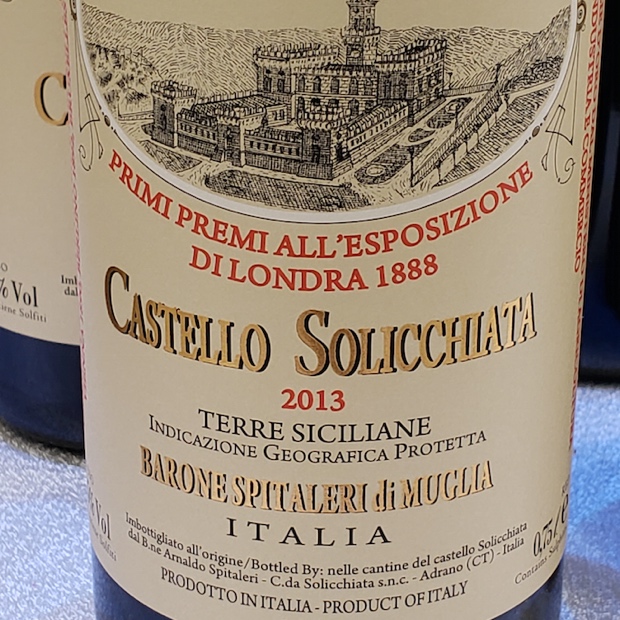
Castello Solicchiata Cabernet Franc 2013, IGT Terre Siciliane
If you are not fascinated by what can happen when cabernet franc takes to the diaspora streets than clearly you are not a golfer. It is unfortunate that this particular bottle is a bit oxidized, not as a matter of age but just the bottle. And yet the captured acidity is still more than intact but it can’t make up for fruit that is at the edge; hints at cooked, roasted, torched and drying. Drink 2019-2020. Tasted May 2019

Castello Solicchiata Cabernet Franc 2012, IGT Terre Siciliane
While the bottle of 2013 is not so sound this 2012 resides in a place of much better condition. The fruit ripeness persists with a drizzle of reduced balsamico and a lingering that really drives the point. There’s a real sense of crunchiness now rendering into chewy leather and liquorice. Highly instructive wine that is a true rarity in these parts around Catania. Drink 2019-2022. Tasted May 2019
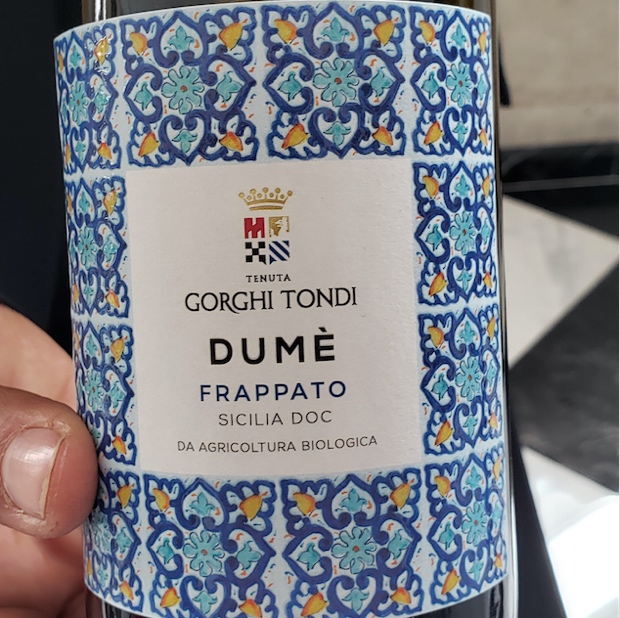
Tenuta Gorghi Tondi Dumé 2018, DOC Sicilia
This frappato from Trapani is a fruit bomb in the lightest and most acid-driven expression of the word. The light, airy and unencumbered brilliance is buoyant and responsive. This is clearly on the sour side of frappato and in a wholly intense and gastronomic way. Drink 2019-2022. Tasted May 2019

Valle Dell’acate Frappato Il Frappato 2018, DOC Sicilia
Here is a richer and riper frappato that has been pressed for success and squeezed for every last good and plenty drop it can give. There’s a sour candy apple tartness to the fruit and nearly negligible tannin. Ready to drink anytime you are ready. Drink 2019-2020. Tasted May 2019
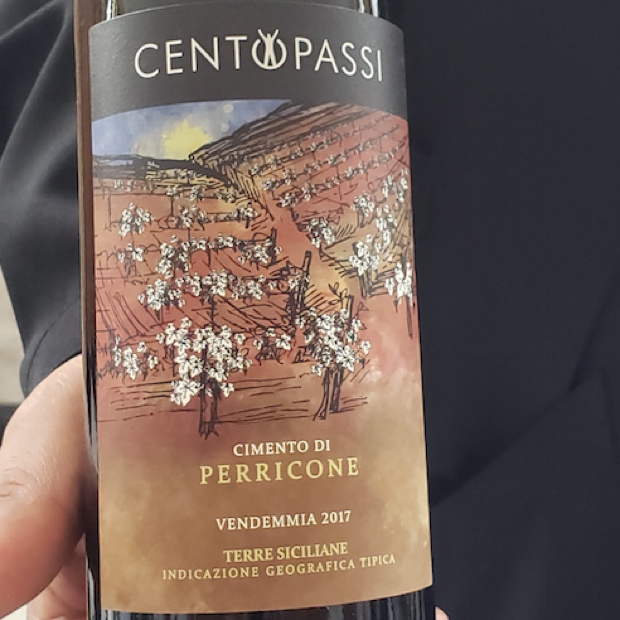
Centopassi Cimento Di Perricone 2017, IGT Terre Siciliane
Cimento is high glycerin and rich perricone in the garnacha realm, nearly into syrup and certainly at maximum fruit. Dark and blue blood fruit mysterious with pectic and fine-grained tannin. Really well made. Drink 2020-2024. Tasted May 2019
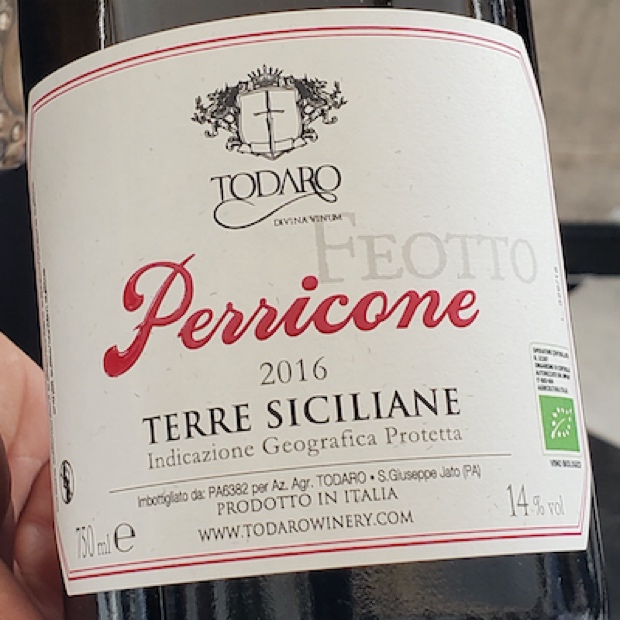
Azienda Agricola Todaro Perricone Feotto 2016, DOC Sicilia
Rich, thick, unctuous and all pervasive glycerin perricone. Highly modern, extracted and wood modified red. Drink 2019-2021. Tasted May 2019
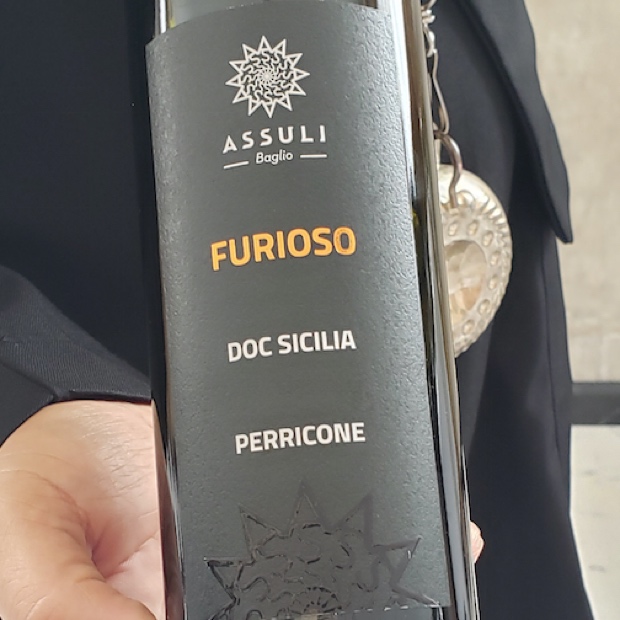
Assuli Furioso Perricone 2016, DOC Sicilia
The longest living variety in Italy, kept alive by a couple dozen producers that was at a time (in the late 19th century) the most planted variety in Sicily. From Contrada Carcitella in Mazaro del Vallo, far western Sicily. A varietal play with rocks, crunchy texture and highly parochial flavours; amaro herbal, blue pulpy fruit and quite forthright. Juicy, juicy wine. Drink 2019-2021. Tasted May 2019
Todoro Shadir 2017, DOC Sicilia
Varietal nero d’avola from Contrada Feotto in San Giuseppe Jato in western Sicily on the north coast. Clay soils at 450m bring dark, rich and warmth for fig, raisin and caramelized sunshine. Not very expressive aromatically though finely tannic and chalky. Acidity is quite supportive though the toasted fruit is not so interested in what it might improve upon were it so accede. Drink 2019-2021. Tasted May 2019
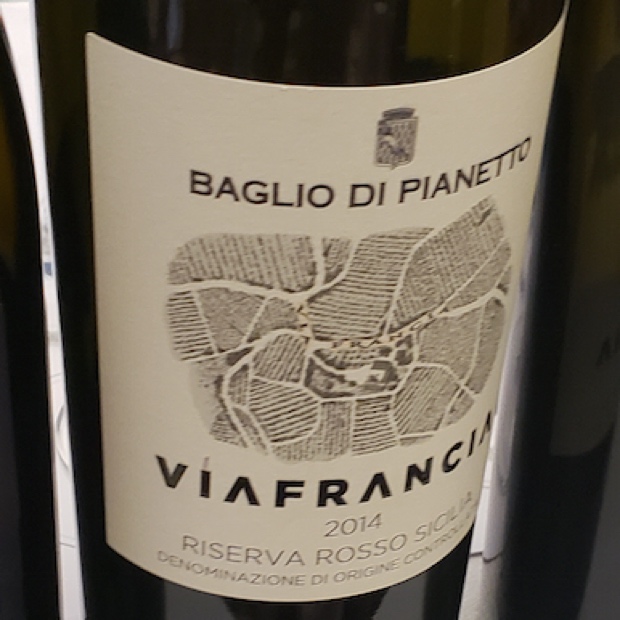
Baglio Di Pianetto Viafrancia Rosso 2014, DOC Sicilia
Contrada Pianetto in Santa Cristina Gela is the source for merlot (70 per cent) and cabernet sauvignon raised in controspalliera (cordone) trellising. Carries all the hallmarks of international varieties grown in foreign lands where it may or may not have found its way. The acidity is searing while the fruit fades into acetic ways. Chalky and grainy but very tart. Drink 2019-2020. Tasted May 2019
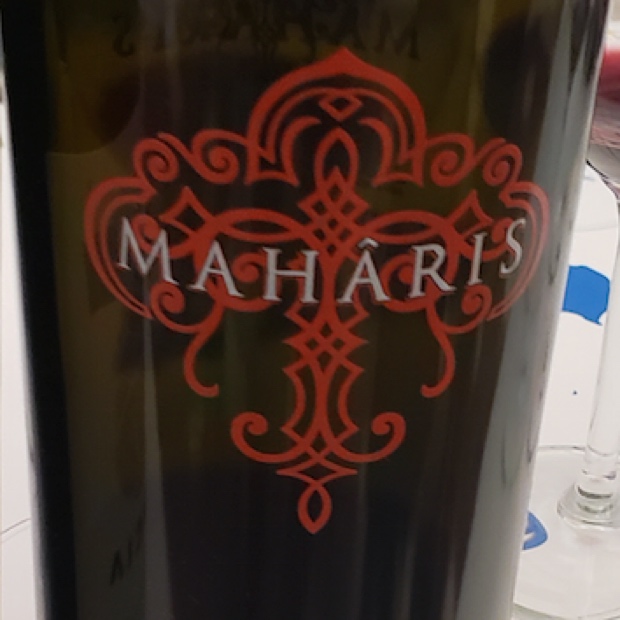
Feudo Maccari Maharis 2016, DOC Sicilia
From Contrado Maccari, in Noto with 100 per cent varietal syrah off of calcareous soils. Quite layered and expressive, peppery, high-toned and fruit liquorice leathery. Fragrant and crunchy at times too with savoury-sinewy, nearly resinous but just dialled back enough syrah style. The name comes from the watchtower built by the Arab inhabitants on this coast. Drink 2019-2022. Tasted May 2019

Duca Di Salaparuta Duca Enrico 2009, IGT Sicilia
This is just a lovely older wine with perfectly intact albeit transmogrified cherry fruit, uncanny as cherries dried, leathery and still somehow deliciously fresh. That it is nero d’avola, allevato ad alberello in Tenuta di Suor Marchesa in Riesi may or not bring further surprise but the tertiary qualities are nothing short of remarkable. Acids are still supportive and though the syrupy palate is advancing into marbella-like territory that earthiness just adds to the overall charm. As does the sweet smoulder of tobacco that comes at you in waves. Drink 2019-2021. Tasted May 2019

Duca Di Salaparuta Làvico 2015, IGT Terre Siciliane
Take a turn about face in such a nerello mascalese, not quite Etna and surely something other. There is a glycerin and wood structuring if mottled by a soothing coolness about this Rosso. It’s lavished with gilded texture and is very lengthy, like a dress on a mosaic depiction that runs the length of a 4th century Roman villa’s welcome hall. Another example of what a particular house in a particular place can do with nerello mascalese. Drink 2020-2029. Tasted May 2019

Gulfi San Loré 2001, IGT Sicilia
Gulfi’s Vigna San Lorenzo is the source for this umami-marmite-vegemite-roasted vegetable-meat curative Alberello raised nero d’avola from Pachino/Eloro/Val di Noto. This is essentially Sicilian royalty winemaking from fruit concentration at its very optimum best. Twenty-four months in all the right vessels has extracted all the magical character in charm and possibility from and for the grape variety. The acidity is extraordinary and the balance just spot on. So much life and further potential lay ahead. Drink 2019-2026. Tasted May 2019

Spadafora Nero d’Avola Selezione Limitada 2013, IGP Terre Siciliane
“We like to wait, we’re in no hurry. When the wine is ready we release it.” So says Enrica Spadafora. This ’13 is the current release, six years forward. The aging has been done for you and this one needed the time, in fact the tannins are still demanding and in charge. The dark fruit has not dissipated a moment or lost a step. Has 10 years left easy. Delightfully structured nero d’avola of tension, purpose and definitive direction. Drink 2020-2025. Tasted May 2019
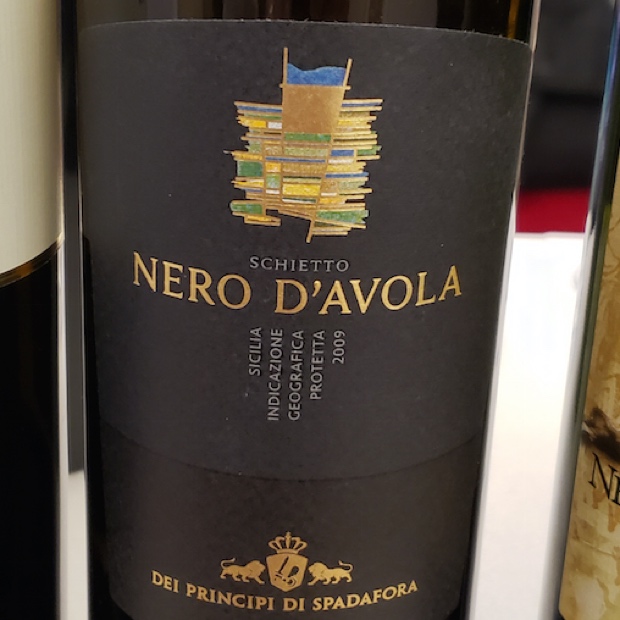
Spadafora Schietto Nero d’Avola 2009, IGT Sicilia
From Contrada Virzi in Monreale this is nero d’avola fuller and with more tart ability. While the aromatics are less curious or idiosyncratic there is a wet concrete character that suggest less oxygenation and freshness, though with it comes more unresolved tannin. From Sicily’s northwest with rich soil structure that translates into this nero d’avola heading towards the sunset. It’s really good though not necessarily magically complex. Drink 2019-2021. Tasted May 2019

Leonardo di Bella and Enrica Spadafora
Spadafora Cabernet Sauvignon Selezione Limitada 2012, IGP Terre Siciliane
One of the few Sicilian wineries to not just bottle varietal cabernet sauvignon but to do so with such intention and to treat it with the same respect nero d’avola affords. From the island’s northwest and a small total output off of organic vineyards. So bloody smooth, of ribena and chocolate and one of the island’s great textural wines. Quite a Sicilian expatriate epiphany this one. Drink 2020-2025. Tasted May 2019
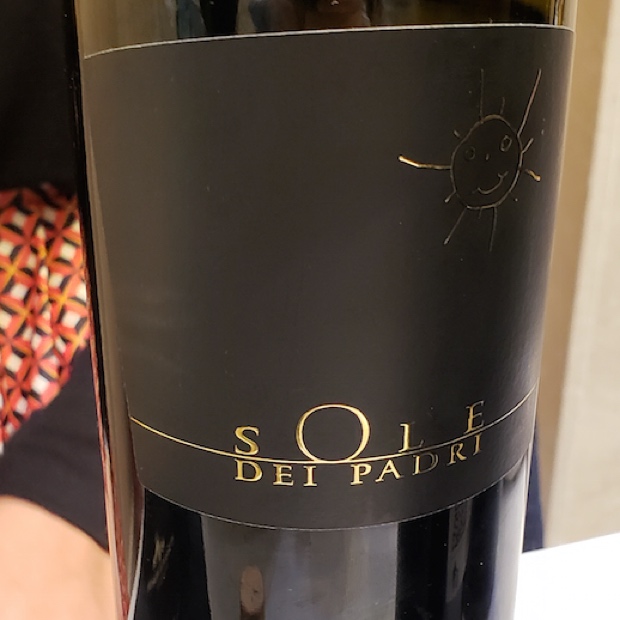
Spadafora Syrah Sole dei Padri 2009, IGP Terre Siciliane
This 2009 is the current release, held back for the consumer as will all the reds. A 100 per cent syrah, 50 per cent seeing 25hL barrels, 25 per cent in barriques and 25 in stainless tank. High toned, of creosote, graphite and syrah’s distinct pepperiness. Travels far beyond nero d’avola and cabernet sauvignon in terms of reductive expressionism though without the dusty plum or black forest cake syrup glaze. The flavours here are singular and striking, needing even more time to integrate because the tannins are formidable. Drink 2021-2027. Tasted May 2019

Donnafugata Mille E Una Notte 1996, DOC Contessa Entellina
An arch classic from Sicilia sud Occidentale and more specifically Tenuta Contessa Entellina. Of the oldest wines this is one of the highest tonality, not unlike older and older schooled nebbiolo from Barbaresco, in a queen’s throne sort of way. There is siply no way to argue that this wine did not deserve to be aged this way and to be waited on for such a moment of appreciation. Age worthy and load management indeed, with every resolution hoped for and expected. Brilliance and a benchmark, with a half decade of life still ahead. Drink 2019-2026. Tasted May 2019

Le Casematte Faro 2017, DOC Sicilia
A four-poster blend of nerello mascalese (55 per cent), nerello cappuccio (25), nocera (10) and nero d’avola. Another wine from Gianfranco Vailati that smells and tastes like the sea, like the far northeastern corner on the strait of Messina to almost reach out and touch Calabria. Sea urchin again, great black fruit, acidity and fine tannin. Drink 2019-2027. Tasted May 2019

Le Casematte Nanuci Nocera 2017, IGP Terre Sicilane
A salty and marine, “ricci di mare,” totally and utterly uncanny in how it smells like sea urchin or perhaps Sicilian mussels and this is a red wine to drink with such an animal and to gaze out over the sea. Dark fruit and massive tannin from the native grape variety. Sit on this thymus one, take deep breaths and take in the vastness of life. Drink 2021-2028. Tasted May 2019
Planeta Santa Cecilia 2016, DOC Noto ($75.00)
The flagship 100 per cent nero d’avola must be poured last because of the power and the fact that it’s not something so easily understood. If you were to try and taste other wines after this it would be like Eric Clapton going on after Jimi Hendrix. There’s a deep olive, blood orange, tar and ribena profile that you just know will seek out truffle, porcini, tar and roses. Welcome to the world of aging Sicilian wines and in this very specific world, nero d’avola from Noto. Drink 2022-2034. Tasted May 2019
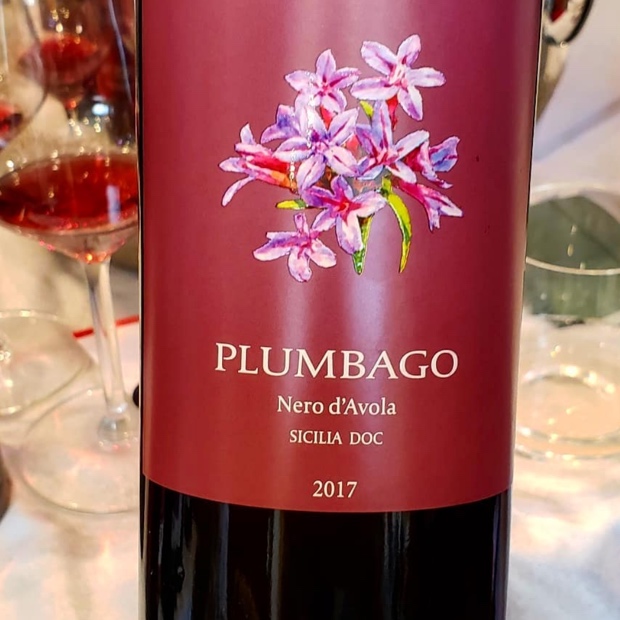
Planeta Nero d’Avola Plumbago 2017, Sicilia DOC
Young and chalky, a nero of very blue fruit, very much a Menfi d’avola, led to believe and also to act like it must from the place. The acidity demands mouth attention, not just up and down but also all around. There’s a certainty and a need for time, a waiting period for those grains of tannins to turn liquid, fill in the cracks and solidify as stalagmites and stalactites. Balance is already confirmed so the result will do the same. Drink 2021-2027. Tasted May 2019

The blend in 2017 is 60-40, nero d’avola and frappato and if there was ever so much power before I’m not sure I’ve been there alongside. The nero loves warm vintages and so really takes grippy control of lighter and more submissive frappato, but conjoined they form a formidable fruit team. Peppery plum and pomegranate plus a tarry note on fresh roses that speaks to an idea that reminds of modern nebbiolo. Big structure in the first of two CdV’s. So much teen grape spirit here. Smells like it. Drink 2021-2028. Tasted May 2019
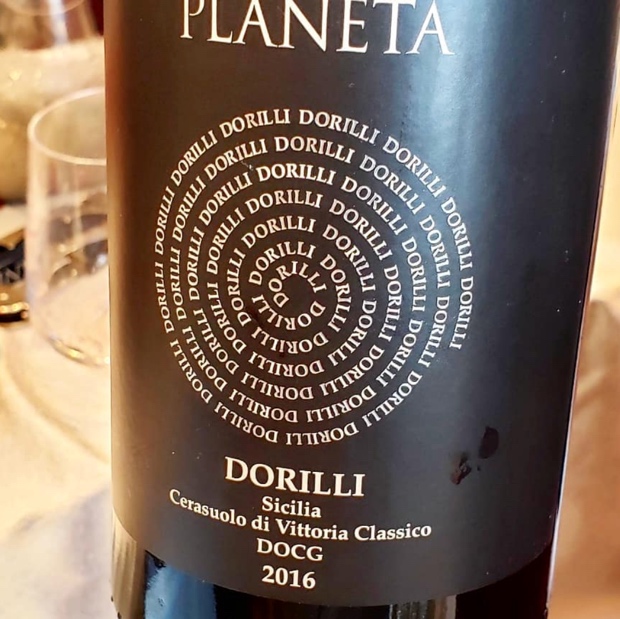
Planeta Cerasuolo Di Vittoria DOCG Dorilli 2016
The blend in 2016 is 70-30, nero d’avola and frappato with the addition of 12 months in old grandi botti, 25 and 36hL. If the CdV (non-classico) was considered to be firm, grippy and in charge then just get a load of the chalky, non-grainy tannins that mark the structure in this DOCG. The aromatics speak to time, as in what’s needed to settle the graphite, creosote and distilled extracts that well up in elemental tension. Great liquid smoke of peppery fruit permeates and percolates. This wine is alive, organically reverberating about while it tries to find itself and you. Last tasted May 2019
Cerasuolo di Vittoria Classico is one thing, Dorilli 2016 is another matter altogether. The name of the estate marks the iconography of this Planeta blend, from a chosen vineyard carrying the dialectical tome of the river passing by. The old maps say Dirillo but through time this has changed, just like this Burgundian wine will draft through wake and evolve. There is a minor reduction here so it’s not as open as the normale though it’s offset by an extra year of aging for release 18 months after harvest. Blooming should happen some time in 2019 after the 70 per cent nero d’avola and (30) frappato begin to unfold out of itself for a full and layered Vittoria. Still there is the Cerasuolo fragrance from a guarantee by vintage and for texture. Drink 2019-2027. Tasted May 2018

Planeta Nocera 2017, DOC Sicilia
This varietal rarity from Menfi is a tannic bruiser and while it often offers no respite at all, this vintage, warm as it was brings fruit nearly capable of standing up to the mother of all acidities and tannins. It’s like sangiovese, barbera and tannat all wrapped up in one big package; tart, tight, taut and of the most solid backbone. Black cherries and black olives through and through. Drink 2021-2026. Tasted May 2019

Planeta Mamertino 2016, DOC Sicilia
From Capo Milazzo the blend is 60-40 nero d’avola and nocera, so apposite to what such a blend will be with frappato instead, out of Vittoria. Here from a dry and relatively cool vintage though the vegetation period was fortunate with water filling the table beneath the surface. Richness preserved, ripeness exceeded and fine tannins resolving, nearly, almost, maybe. Drink 2020-2025. Tasted May 2019

Reds from Etna
Pietradolce Etna Rosso Contrada Santo Spirito 2016, DOC Etna
Santo Spirito seems like it doles fruit that wants to solicit immediate gratification when in fact it’s been structured to advance only to this point. It teases that luxe fruitiness and then lashes at you with repeated whips of acidity and tannin. Much bigger, bolder and grippier than the first attack provides and so it just keeps coming at you in waves. Not a wine of first impression so be sure to take your time or it may just overwhelm you. Drink 2020-2027. Tasted May 2019
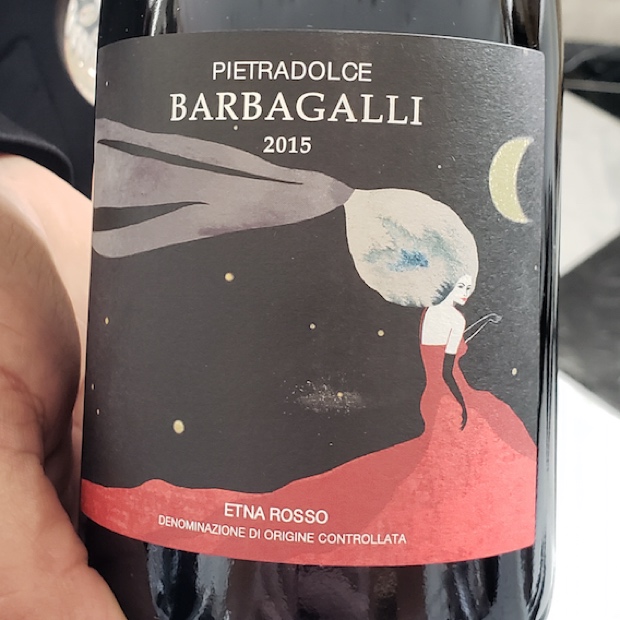
Pietradolce Etna Rosso Barbagalli 2016, DOC Etna
Barbagalli is not merely just a year older than Santo Spirito but it is a contrada to deliver the most fruit in the Piertradolce stable. There’s also an earthy underbelly impression, plus a richness and an unctuous stability that breeds sour edging over the sweetness of its fruit. Does not fool around in fact it’s structured to last a short lifetime, or 15 years at the very least. Last tasted May 2019
The estate flagship Etna Rosso Barbagalli is taken from Contrada Rampante in the area that is known as “Barbagalli” in Solicchiata. This northern Etna 80 to 100 year-old pre-phylloxera vineyard delivers the most naturally earth-crusted, umami-laden expression in hyperbole, concentration and peak spiciness. There is a buzz about this nerello mascalese that the rest of the portfolio does not pulse with, neither outward through expressionistic energy nor inward, retracted and self-effacing by implosive feeling. The texture separates itself with multi-faceted tenor and a tremor of explosive potential that might strike at any time, anywhere, any place. This will turn into something ethereal, of that there can be little doubt. Drink 2022-2032. Tasted May 2018

Tornatore Etna Rosso Pietrarizzo 2017, DOC Etna ($34.00)
Pietrarizzo comes with mentholated cool and savoury fruit that soothes the palate, this after having anaesthetized by way of the inhalant it provides. If you hang in there for 10 minutes or so it will exude lovely cherry and tisane notes before coming to grips with its firm constituent behaviour. The development over time shows the character of its building blocks for structure and longevity. Very fine wine indeed. Drink 2021-2028. Tasted May 2019
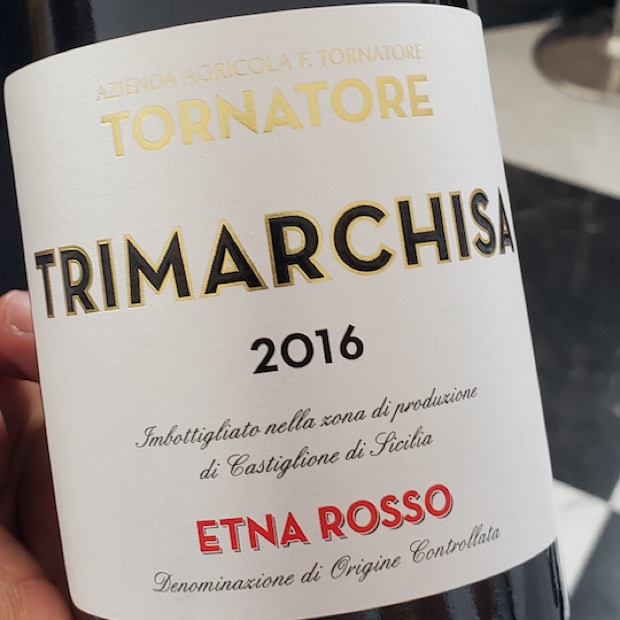
Tornatore Etna Rosso Trimarchisa 2016, DOC Etna
Tornatore Trimarchisa in Rosso clothing is rich, luxe and luxurious nerello mascalese with darker fruit as compared to many,. The volcanic basalt is reductive and reduced like a lava demi-glacé for Etna Rosso of deep, dark and hematic-blood orange display. Impressive concentration and intensity with seven to 10 years of ideal Etna DOC exemplary drinking ahead. Drink 2020-2029. Tasted May 2019
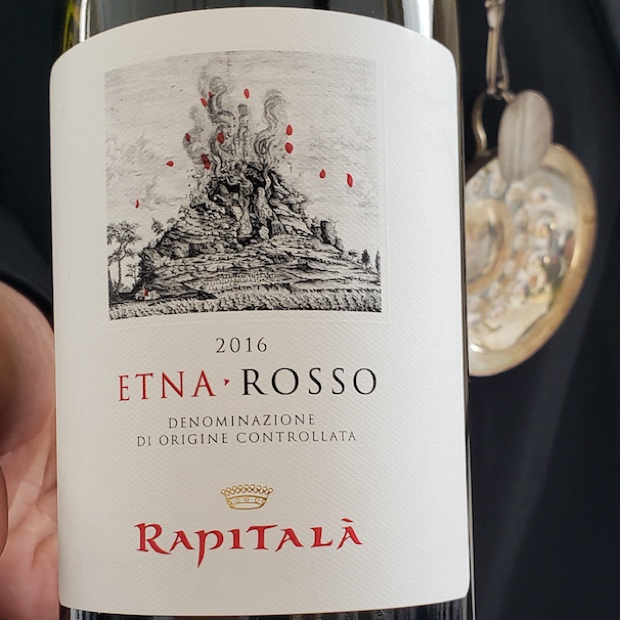
Tenute Rapitalà Etna Rosso 2016, DOC Etna
Here we climb right into the depths of the Etna Rosso glass in a structured nerello mascalese of hematic and ferrous red fruit. Plenty of depth, wood spice and high acidity, not to mention wound up, pent up and grippy tension. That’s the tannin speaking, fully extracted and presented to the fruit, which incidentally want no part of that anxiety at this time. The architecture is Roman and if not for an emperor, is at least at the level of nobility. Wait five years before returning to this place. Drink 2021-2028. Tasted May 2019
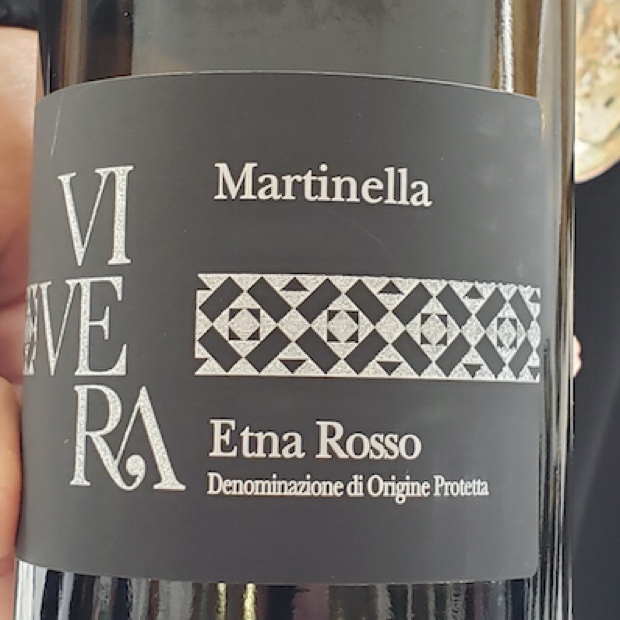
Vivera Etna Rosso Martinella 2013, DOC Etna
At nearly six years of age it’s a wonder this Martinella cru nerello mascalese from Vivera is till tight and reductive. It’s quite the spool of tannin this fruit layered with fine acidity is wrapped around. Good fruit concentration brings sour berries and sweet pomegranate into a pool where pectin and acids swirl with the fishes. Fine wine here. Drink 2021-2029. Tasted May 2019
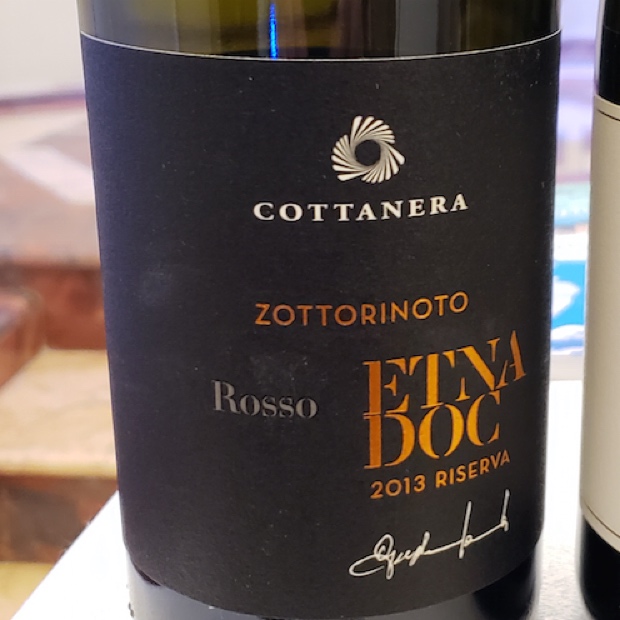
Cittanera Zottorino Etna Rosso Riserva 2013, DOC Etna
Cool vintage, late pick, some rain at harvest for nerello mascalese in Contrada Zottorino, Castiglione di Sicilia. Fruit driven aromatics still quite persistent now coming into flowers and spices. Acidity and freshness plus structure in line with Etna’s possibilities plus an affinity with more famous or more established Italian kin like nebbiolo and sangiovese. Very much alive, less advanced to taste and eight in the window. Drink 2019-2022. Tasted May 2019

Cantine Nicosia Etna Rosso Riserva 2012, DOC Etna
From Contrada Monte Gorna in Trecastagni. Impressively youthful, still pulsating with original fruit and magically or if you will, skeptically un-evolved. Transparent and clear as a late summer afternoon sky with nary a moment of distraction. If only a perfect bottle it matters little because the showing speaks volumes about vintage, luck and acumen. Fruit rom start to finish but also a searing tartness on a sour spectrum that talks the varietal talk. If you love Etna Rosso this is a perfectly vibrant and classic example. Drink 2019-2024. Tasted May 2019
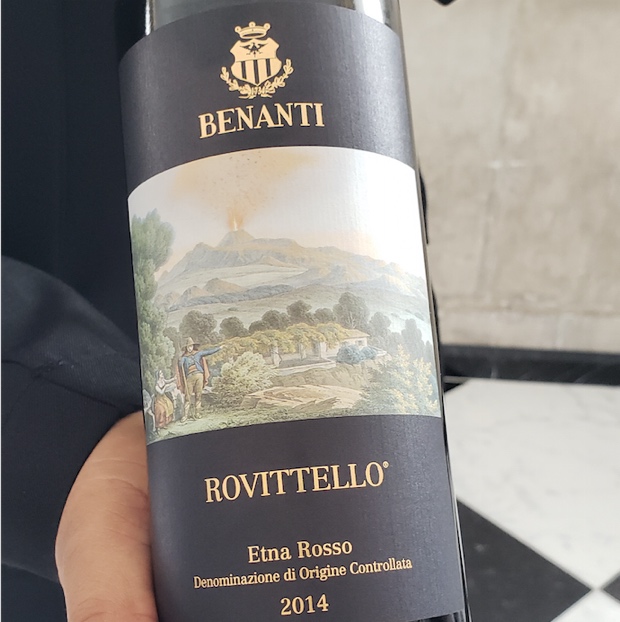
Benanti Etna Rosso Rovittello 2014, DOC Etna
Rovittello cru is a structure gifting one and that much is obvious from Benanti’s 2014, a wine at five years that has yet to move an inch. This from an estate known well for the elegance and understated nature of their nerello mascalese. Sometimes the volcanics in the soils give you pomegranates and at other time they give you demi-glacé. This is a long and winding structured road Etna Rosso travelled one. It winds in and out of fruit, acidity and tannin so where it will emerge remains to be seen. I would imagine the truth will lie somewhere between five years and not more than 20. Drink 2021-2032. Tasted May 2019

Benanti Etna Rosso Serra Della Contessa 2011, DOC Etna
From Contrada Monte Serra I Viagrande on the southeast volcanic slope soils of Etna. More evolution, looser and well into secondary character. Acidity keeps it alive while the fruit has moved into dried, leathery and browning personality. Quite earthy, nearly stewed and further along by a long shot. It’s both a glass of pleasure and also one of puddle mud. That said it’s charming and even if it may seem at least five years older than it really is, there is still something to get onside with, especially with a plate that might sing along. Drink 2019. Tasted May 2019
Torre Mora Etna Rosso Càuru 2016, DOC Etna
Torre Mora Etna Rosso Càura is the entry level blend of nerello mascalese (85 per cent) and nerello cappuccio (15), meaning hot in the local dialect, taken off of younger vines 7-10 years old. Nicely floral and also a bit salumi curative, tangy and freshly volcanic. Chewy and persistent, somewhat youthfully rustic in the precocious ways of nerreli bambini on Etna’s slopes. Bodes well for what’s more to come. Future vintages from more mature vines will bring next level expressiveness. Count on it. Drink 2019-2023. Tasted May 2019

Torre Mora Etna Rosso Scalunera 2015, DOC Etna
From Imboscamento (inside Rovittello, or hiding in the bush within), the next level blend is not even what the top tier Contrada specific wine will be, either next year of the one after that. Tier two is older vines in the 15-20 year range, with savoury basaltic notes typical of the cooler clime and quite high-toned like Marsannay. An uncanny connection to cooler limestone raised Bourgogne, like the lighting red fruit pinot noir, here in nerelli clothing. Says that this Etna Rosso comes from a place, from a very specific terroir. Drink 2020-2025. Tasted May 2019

Cottanera Etna Rosso Diciassettesalme 2017, DOC Etna
Youthful to say the least and so the operative here is reductive, tight and unforgiving. A swirl, some air and some time releases the essential oils of a nerello mascalese out of a historic contrada with a great history of aging the wines. The fruit concentration is markedly given to the obvious and the fineness of acidity may be equalled by the high level of glycerin available. That said it’s a balancing act performed by going to the edges of all these places and peeling back to try again. This will age gracefully and consistently so that subsequent trips and sips provide new and improved information all along the way. Drink 2021-2032. Tasted May 2019
Tenute Bosco Etna Rosso 2016, DOC Etna
The Rosso’s fruit is in Contrada Piano dei Dani, with 90 per cent nerello mascalese and 10 cappuccio. It’s ripe, bright, knowable and the fruit concentration reaches an apex of optimization without tempting fate, going over or pressing any problematic buttons. There’s a succulence with thanks to level-headed and easy-handed oaking so that the overall expression goes hand in hand with your wishful senses. Drink 2019-2026. Tasted May 2019

Tenute Bosco Etna Rosso Vigna Vico Pre-Phylloxera 2015, DOC Etna
The litheness of this nerello mascalese from Mount Etna off of 100-plus years of age pre-phylloxera vines cannot be over-stated or overstressed. The light, ethereal beauty of this wine may very well transport you to a place, to a vacuum within a bubble that is a hidden world inside a biodome. Few words are available when a wine speaks to you such as this Vico does to me at this time. This impossibility of such fruit concentration is also implausibly understated, as are the tannins and the acidity, yet all align and intertwine along a perfectly rendered line. You recognize the automatic brilliance, for the people and from the place. You just know it when you taste it. If you can find this wine, if you ever get the chance to purchase a bottle or two, you owe it to yourself to act, for you and for anyone you might happen to share it with. Drink 2019-2035. Tasted May 2019
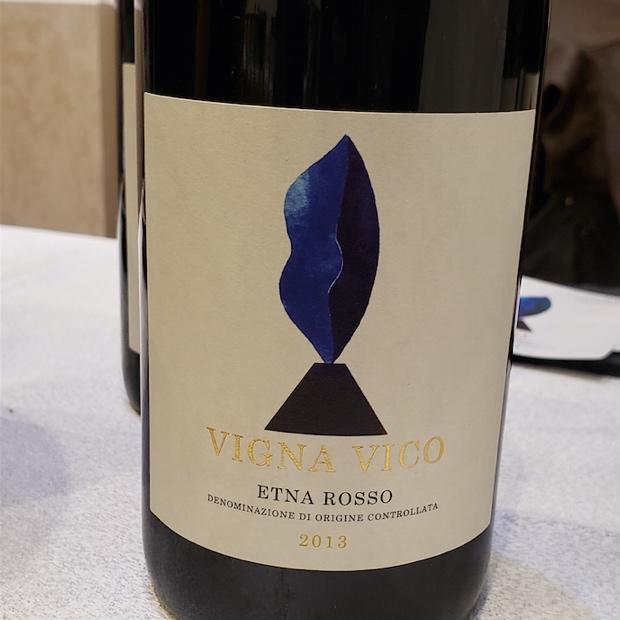
Tenute Bosco Etna Rosso Vigna Vico Pre Phylloxera 2013, DOC Etna
Allora e adesso. And so we travel back another vintage to when Vico was in its first vintage and the word Vigna was still on the label. Nothing else on the mountain smells like Vico, is as delicate while having fruit concentration that is so mysteriously connected to transparency, grace and structure. Though the vintage was difficult this is Etna Rosso of heritage and love that only this house can procure, from Sofia Bosco, the men and women in her crew. Drink 2019-2029. Tasted May 2019

Tasting @planetawinery with @plantdependent
Planeta Eruzione 1614 Nerello Mascalese 2016, DOC Sicilia ($42.99)
Mainly nerello mascalese but there is in fact nine per cent nerello cappuccio. Not so much an eruptive vintage but certainly a rumbling one, a low murmur, gardening at night. This is imagined to be the nerreli red that would work in the garden, at night, under an Etna moon, no clouds (as if) and absolute quiet. Fruit concentration is outstanding, liquid pepperiness calming and yet grappling for you attention. The grip is easy but wrapped tight and the next five years will see very little movement. A beautifully textured Etna red with everything to look forward too. Last tasted May 2019
Like the yellow lorry carricante thriller it is Etna Rosso incarnate that is portrayed in this Eruzione red lorry nerello mascalese (with nine per cent nerello cappuccio) from up the mountain’s 890m vineyards of (Contrada) Sciaranuova, but with some fruit from lower altitude at 600m. The vine age is part 2008 and part 20 year-old vines and a small section going back 90 years but just a small spot. The higher you climb for nerello macalese the more finesse you acquire. This Eruzione is swimming through lava with it, smoothed by plenty of silky texture, raspberry and chalky liquid tannin. Nerello, “you ain’t nothing but a true embrace. You ain’t nothing but a hidden face.” Your Planeta edition gets neither more refined, elegant nor focused. You’ve been descried as the “alternative classic” or the new light pinot noir. Maybe frappato, but not you, nerello mascalese. Let’s leave you out of the discussion. Leave you alone. Talk about the weather. Drink 2019-2025. Tasted May 2018
Good to go!
godello

Twitter:
Instagram: mgodello
WineAlign


























